Mary Meeker
description: an American venture capitalist and former Wall Street securities analyst, known for her annual 'Internet Trends' reports
64 results

Wall Street Meat
by
Andy Kessler
Published 17 Mar 2003
Hmmmm, I wonder what’s going on. The next Monday morning, this same woman poked her head into my office and Something about Mary said, “Hi, I’m Mary Meeker. I’m just starting today. How do you get a PC around here?” My response: “Welcome aboard.” For some reason, that was the official greeting for anyone new at Morgan Stanley. People say “Welcome aboard” non-stop, and you can’t wait for someone else new to start so you can start saying it instead of having it pounded in your ears. Mary Meeker came from Cowen, a so-so boutique that had a decent technology presence. She was an assistant to Michele Preston, the somewhat outdated computer analyst that I’d first met at the Apple analyst meeting on my first trip with Bob Cornell.
…
But, Frankie said never again, and beat up his bankers to dig deep to find problems at companies and then run away at the hint of any improprieties. Mary Meeker had an analytical crew she could count on to wade through due diligence and analysis of banking clients, but I don’t think she ever felt comfortable with her own analysis. The bankers were her filters. Bad move. · · · Just after the Institutional Investor poll had come out, I stopped into Mary Meeker’s office with some advice about how it was all a marketing game and how she could use the sales force to her advantage. Her head barely came above her desk and she was at a strange angle, sort of kneeling on her chair.
…
He knew the only reason they were paying homage is that they hoped to get an allocation of shares in what was clearly going to be a hot, hot, hot IPO, sure to pop soon after trading began. Near Frank, you would have also observed Mary Meeker, chatting with a small clique of clients who were badgering her for earning estimates, growth prospects and, I suppose, how she really felt about the company. The Netscape IPO scared the hell out of me. Not because it made Jim Clark a billionaire, not because I had had a shot at being involved (man, I could write a book about that), and not because Frank Quattrone and Mary Meeker were involved. It scared me because it was worth so damn much. The market was valuing Netscape at $2.2 billion.

Googled: The End of the World as We Know It
by
Ken Auletta
Published 1 Jan 2009
Myhrvold, “Impact of the Internet,” November 15, 1994, gathered by the author for a May 12, 1997, profile of Myhrvold in The New Yorker. 36 Myhrvold presciently warned: Nathan P. Myhrvold, “No More Middleman: The Broad Impact of the Internet,” November 27, 1995. 36 Bill Gates galvanized his troops: “The Internet Tidal Wave,” May 25, 1995, and available via a Google search. 36 “In this report”: Mary Meeker and Chris DePuy, The Internet Report, HarperBusiness, 1996. 37 “He had a dial-up Web connection”: author interview with Mary Meeker, January 23, 2009. 37 twenty-two billion dollars on wireless services: Mark Landler, “An Aerial Assault on the Wired Nation,” in the New York Times, February 26, 1996. 37 he drew a distinction between incremental changes: Nathan P.
…
Guth, “Google Tackles Microsoft in Launch of Browser,” Wall Street Journal, September 2, 2008. 265 “ten thousand iPhone applications: reproduced in Mary Meeker’s Morgan Stanley report, ”Economy/Internet Trends,“ December 19, 2008. 265 1.6 billion text messages: Schmidt speaks at annual Google shareholders meeting, May 8, 2008 and viewed on Google.com. 265 ”Because his customers use so many more services“: author interview with Ivan Seidenberg, October 30, 2008. 266 ”almost a third of all Google searches“: Brin, ”Letter from the Founders,“ Google 2008 annual report, April 2009. 266 ”I would love to argue“: author interview with Eric Schmidt, September 15, 2008. 266 ”We’re watching it“: author interview with Ivan Seidenberg, October 30, 2008. 266 ”Privacy is a much noisier issue“: author interview with Barry Diller, January 10, 2008. 267 A March 2008 poll: TRUSTe privacy survey from Stephanie Clifford, ”Many See Privacy on Web as Big Issue, Survey Said,“ New York Times, March 16, 2009. 267 Huxley more relevant than Orwell : Neil Postman, Amusing Ourselves to Death: Public Discourse in the Age of Show Business, Viking Penguin, 1985. 268 ”It’s a totally different kind of advertising“: author interview with Irwin Gotlieb, February 11, 2008. 269 the November 2008 Web 2.0 Summit: attended by author, November 5-7, 2008. 269 The gloom extended to Silicon Valley : the recession’s impact on the valley from a spate of reports, including: Ashlee Vance, ”Tech Companies, Long Insulated, Now Feel Slump,“ New York Times, November 15, 2008; Richard Waters and Chris Nuttall, ”Optimism Fades as Silicon Valley Suffers Job Losses,“ Financial Times, October 20, 2008; Daniel Lyons, ”Down in the Valley,“ Newsweek, October 20, 2008. 271 He wrote a blog in January 2009: Michael Arrington, ”Some Things Need to Change,“ TechCrunch.com, January 28, 2009. 271 ”travel“ no longer a top search word: Eric Schmidt, in a speech at Bloomberg headquarters in New York attended by the author, October 20, 2008. 271 searches for ”bankruptcy“ had jumped 52 percent: Jonathan Rosenberg at Google’s first quarter earnings call on April 16, 2009. 271 ”most significant thing that happened at Google“: author interview with Bill Campbell, November 6, 2008. 272 ”While Google’s success is hard to dispute“: author interview with Mary Meeker, January 23, 2009. 272 ”When everything runs well“: author interview with Patrick Pichette, April 1, 2009. 272 ”Patrick is particularly good“: Eric Schmidt interviewed by Mary Meeker March 3, 2009, at the Morgan Stanley conference in San Francisco. 272 a bonus for 2008 of $1.2 million: Form 8-K, filed with the SEC February 26, 2009. 273 For the first time, Coogle was contracting: Jessica E.
…
Helps Out Future of 3-D,” Advertising Age, March 13, 2009. 300 page one of the Los Angeles Times : Stephanie Clifford, “Front of Los Angeles Times Has an NBC Article,”’ New York Times, April 10, 2009. 301 “Wrestling had bigger audiences”: author interview with Robert Pittman, February 29, 2008. 301 “I think people are getting”: author interview with Marc Andreessen, June 9, 2008. 301 Each of the 40,000: author interview with Scott Heiferman, January 25, 2008. 301 “one quarter of CBS‘s”: author interview with Quincy Smith, September 16, 2008. 302 The online dating service: author interview with Barry Diller, March 3, 2009. 302 Mary Meeker predicts: author interview with Mary Meeker, January 23, 2009. 302 By mid-2008 China: “China’s Internet Cafes Still Crucial to Online Game Growth,” VentureBeat.com, August 17, 2008. 302 “PiperJaffray projected”: Matt Richtel and Bob Tedeschi in the New York Times, April 6, 2009. 302 “we want to get credit card numbers”: author interview with MarcAndreessen, March 27, 2008. 302 “the stealth device”: author interview with Ivan Seidenberg, October 30, 2008. 302 “social network traffic”: author interview with Eric Schmidt, June 11, 2008. 303 “We made one really big mistake”: author interview with Dr.
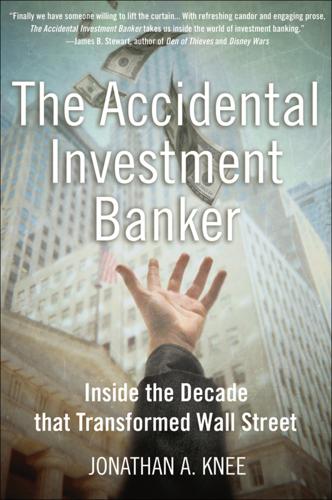
The Accidental Investment Banker: Inside the Decade That Transformed Wall Street
by
Jonathan A. Knee
Published 31 Jul 2006
So Joe told me everything and made me promise to act surprised as Sine magnanimously handed over the reins of the Thomson account. All of the cultural phenomena described here relating to the boom’s impact on investment banking and investment bankers generally sometimes took outsized shape at Morgan Stanley because of a single individual: Mary Meeker, Queen of the Net.12 Mary Meeker had been a fairly undistinguished PC and computer software research analyst in the early 1990s, slaving away on reports covering companies like Microsoft and Compaq. She had joined the equity research division of Morgan Stanley in 1991, and prior to the Internet boom had never appeared in the rankings of the Institutional Investor magazine’s prestigious survey of analysts.
…
Nina Munk’s Fools Rush In: Steve Case, Jerry Levin and the Unmaking of AOL Time Warner (New York: Harper Business, 2004), 123–129, is devastating in its depiction of how Case and his advisors schemed as to the most effective use of their overvalued stock and ultimately settled on the hapless Time Warner and the emotionally fragile Jerry Levin. 12 Mary was so dubbed by Barron’s in an influential December 21, 1998, article by Andrew Barry titled “Net Queen: How Mary Meeker Came to Rule the Internet.” 13 De Baubigny later founded a high-end wine storage business in San Francisco, where he continues to work today. 14 This and other similar pages are reproduced in Appendix IX of The European Internet Report from June 1999, one of a series of follow-on volumes to the original Internet Report. None of these subsequent equity research reports managed to be published commercially. 15 Peter Elkind, “Where Mary Meeker Went Wrong,” Fortune, May 14, 2001. 16 E.g., Randall Smith, “High Tech Banker Scores Deals With Mule and ‘Rocky Raccoon,’” Wall Street Journal, September 24, 1999. 17 Equity Ownership in America, 2002, Investment Company Institute and the Securities Industry Association. 18 Susan Pulliam and Randall Smith, “Silicon Touch: For Frank Quattrone, With a Fief at CSFB, Tech Was a Gold Mine—Both Banker and Investor, He Made the Most of IPOs and Venture-Capital Ties—Getting in On the Ground Floor,” Wall Street Journal, May 3, 2001. 19 Andrew P.
…
Other investment banks belatedly tried with varying degrees of success to establish their own ready-for-prime-time celebrity Internet analysts, but Mary had an insurmountable first mover advantage during a boom that would only last a few short years. Ironically, these jealous competitors probably never suspected the extent to which at Morgan Stanley many not so secretly wished they could give her away. The problem was that having Mary Meeker at Morgan Stanley created client expectations that simply could not be fulfilled. This was partly a function of the overwhelming demand for all things Meeker. But it was exacerbated by Meeker’s stubborn insistence that she be consulted on any decision touching on her “space.” And her celebrity was such that Morgan Stanley acceded to a very broad definition of the realm within which Meeker had unchallenged authority.

Nothing but Net: 10 Timeless Stock-Picking Lessons From One of Wall Street’s Top Tech Analysts
by
Mark Mahaney
Published 9 Nov 2021
Yes, he was kind enough to meet me in the lobby of Morgan Stanley, where he worked, to hand me some of Mary Meeker’s research reports. But he was also kind enough to inform me that one of Meeker’s two associates was soon to be leaving and Meeker was on the lookout for a new hire. Was I interested? Was I! So if there’s one person I am most in debt to for launching my Internet Wall Street career, it’s Chris Boova. Thank you, Chris! What then followed was a six-month interview process that ended with me joining the Morgan Stanley equity research department as an associate to Mary Meeker. That process involved me meeting several times with the associate who was leaving—a guy named Russ Grandinetti, who was leaving for what turned out to be a fantastic career with a tiny little online retail company called Amazon.com, where he helped launch the Kindle product line, among many other achievements.
…
Those four stocks helped create one of the most lucrative investment portfolios (FANG as in Facebook, Amazon, Netflix, and Google) of the past several years. And I’ve been with them every step of the way. Lots of skill. And lots of luck. I have also been unlucky. I was laid off by Morgan Stanley in 2003 in the wake of the dot-com bust, after working there for five years as the top associate to legendary analyst Mary Meeker. I was also fired by infamous hedge fund manager Raj Rajaratnam at Galleon for “not getting enough edge” after grinding it out in that trading snake pit for a year. (That firing turned out to be a blessing, in hindsight. Still, firings are never fun.) And I was “terminated” by Citibank for a violation of that company’s media disclosure policies—a highly painful experience on both a professional and personal level—after working extremely hard there for seven years building the leading Internet research franchise on Wall Street.
…
And showing up to analyze the Internet sector in 1998 was exactly the right place at the right time. Like I said, I have been very, very lucky. My luck occurred because in 1998, a Wharton Business School classmate and friend of mine, Chris Boova, was kind enough to give me some of the research reports published by one Mary Meeker, who for over a decade was the Internet analyst at Morgan Stanley. She was also the lead author of The Internet Report, a 150-page primer on the Internet sector published by Harper Business in 1997. I vividly remember that report because a Wall Street Journal article on it sent me scurrying down to the Barnes & Noble in downtown Philadelphia looking to buy it.
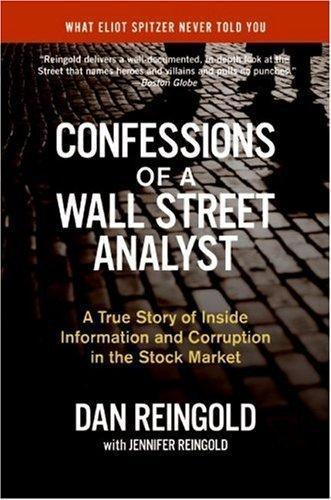
Confessions of a Wall Street Analyst: A True Story of Inside Information and Corruption in the Stock Market
by
Daniel Reingold
and
Jennifer Reingold
Published 1 Jan 2006
I was mystified. Although telecommunications and the Internet would later become as linked as Siamese twins, I didn’t quite see the connection between the two. I made a mental note to someday figure out exactly what he was talking about. Most people credit Mary Meeker with first educating Wall Street about the Internet. I sat next to Mary Meeker at Morgan Stanley for several years, but she hadn’t yet discovered it when I departed for Merrill Lynch in early 1993. So, for me, Jim Crowe was the person who first alerted me to the Internet’s potential impact on the telecom industry. But at the time, I was more concerned with surviving the next deal announcement and fending off Jack’s attacks than I was with the largest technological shift of the past several decades.
…
First to fall had been the Internet analysts, the most famous of whom were Henry Blodget of Merrill Lynch and Mary Meeker of Morgan Stanley. In March of 2001, Henry Blodget’s role as analyst-cum-banker was highlighted in a series of articles in The Wall Street Journal, and subsequently an investor brought a suit against him, claiming Blodget had recommended stocks that he thought were dogs. Merrill would settle the suit a few months later for $400,000, unleashing a tidal wave of similar lawsuits. In May 2001, Fortune ran a cover story, “Can We Ever Trust Wall Street Again?” featuring a very unflattering, sinister-looking picture of Mary Meeker.7 I didn’t know either of them very well.
…
Cast of Characters MCI (1983–1989) Bill McGowan, Founder and CEO Orville Wright, President, COO, and Vice Chairman Bert Roberts, President, CEO, and Chairman (later Chairman of MCI WorldCom) William Conway, Jr., Chief Financial Officer Daniel Akerson, Chief Financial Officer, later President Doug Maine, Chief Financial Officer Jim Hayter, Vice President of Investor Relations Connie Weaver, Director of Investor Relations MORGAN STANLEY (1989–1993) Research Department Ed Greenberg, senior telecom analyst Rick Klugman, my associate Mary Meeker, software analyst and later, Internet analyst Mayree Clark, head of global equity research Jack Curley, head of global equity research Jay Cushman, head of domestic equity research Peter Dale, head of domestic equity research Executives and Investment Bankers Robert Greenhill, President until March 1993 John Mack, President, March 1993–March 2001 Bob Murray, telecom banker Joe Perella, head of investment banking Frank Quattrone, head of technology banking Clay Rohrbach III, investment banker Paul Taubman, telecom and media mergers and acquisitions banker Jeff Williams, head telecom banker MERRILL LYNCH (1993–1999) Research Department (Management) Ray Abbott, attorney for research compliance department Rosemary Berkery, co-director of global research, then General Counsel Jack Lavery, head of global equity research Andy Melnick, co-director of global research My Research Team Julia Belladonna Ehud Gelblum Mark Kastan Rick Klugman Megan Kulick Connie Marotta, my executive assistant Dick Toole Research Colleagues Neil Barton, telecom analyst in London, covering BT and European telecom stocks Henry Blodget, Internet analyst Chris McFadden, replaced Barton in 1995, covering European telecom stocks Jessica Reif-Cohen, cable, media, and entertainment analyst Executives Dan Tully, CEO and Chairman David Komansky, President and CEO Herb Allison, head of investment banking and later President Jerry Kenney, Executive Vice President, strategy and research Tom Davis, head of investment banking Investment Bankers Matt Bowman, Executive Vice President of investment banking, internal banker to Merrill Lynch, banker to MCI and other major companies Michael Costa, telecom mergers and acquisitions specialist Tom Middleton, co-head of telecom investment banking Rob Kramer, telecom banker Frank Maturo, banker to Level 3 Mark Maybell, head of telecom and media banking Mark Vander Ploeg, banker to the Anschutz Corporation Sean Wallace, telecom banker CREDIT SUISSE FIRST BOSTON (1999–2003) Research Department (Management) Al Jackson, global research director My Research Team Julia Belladonna I do Cohen Ehud Gelblum Mark Kastan Connie Marotta Research Colleagues Cindy Motz, U.S. wireless telecom analyst Executives John Mack, CEO, beginning in August 2001, replacing Allen Wheat Allen Wheat, CEO through August 2001 Chuck Ward, head of investment banking, later President Brady Dougan, head of equities, now CEO of CSFB Frank Quattrone, head of technology investment banking COMPETITOR TELECOM ANALYSTS Blake Bath, Lehman Brothers Stephanie Comfort, Salomon Brothers and Morgan Stanley Frank Governali, CSFB and Goldman Sachs Joel Gross, Donaldson, Lufkin & Jenrette (DLJ) Jack Grubman, PaineWebber, Salomon Brothers, and Salomon Smith Barney (Citigroup) Rick Klugman, PaineWebber, Goldman Sachs, and DLJ Robert Morris, Goldman Sachs Adam Quinton, Merrill Lynch Tim Weller, Donaldson, Lufkin & Jenrette “BUY-SIDE” CLIENTS (MUTUAL FUNDS, PENSION FUNDS, HEDGE FUNDS, ETC.)
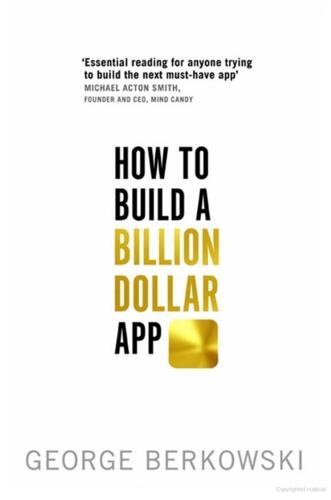
How to Build a Billion Dollar App: Discover the Secrets of the Most Successful Entrepreneurs of Our Time
by
George Berkowski
Published 3 Sep 2014
Chapter 2: Mobile Genetics 1 ‘ITU Releases Latest Global Technology Development Figures’, press release on ITU.int, 27 February 2013, www.itu.int/net/pressoffice/press_releases/2013/05.aspx#.UwypjeN_tAo. 2 Flurry Analytics, 2013 and Mary Meeker and Liang Wu, KPCB Annual Internet Trends Report 2013, published May 2013, slide 40, www.kpcb.com/insights/2013-internet-trends. 3 Jessica E. Lessin and Spencer E. Ante, ‘Apps Rocket Toward $25 Billion in Sales’, article on WSJ.com, 4 March 2013, online.wsj.com/article/SB10001424127887323293704578334401534217878.html. 4 Mike Croucher, ‘Supercomputers vs. Mobile Phones’, 2 June 2010, www.walkingrandomly.com/?p=2684. 5 Mary Meeker and Liang Wu, May 2013, slide 109, op. cit. 6 Mary Meeker and Liang Wu, May 2013, slide 33, op. cit. 7 Data retrieved from www.cnnic.net.cn/hlwfzyj/hlwxzbg/hlwtjbg/201401/P020140116395418429515.pdf 8 Ibid. 9 StatCounter Global Stats, ‘Comparison from November 2013 to January 2014’, gs.statcounter.com/#desktop+mobile-comparison-ww-monthly-201311-201401-bar. 10 ‘Smartphone Users Worldwide Will Total 1.75 Billion in 2014’, article on eMarketer.com, 16 January 2014, www.emarketer.com/Article/Smartphone-Users-Worldwide-Will-Total-175-Billion-2014/1010536. 11 Tomi Ahonen, ‘The Annual Mobile Industry Numbers and Stats Blog – Yep, this year we will hit the mobile moment’, blog post on CommunitiesDominate.blogs.com, 6 March 2013, communitiesdominate.blogs.com/brands/2013/03/the-annual-mobile-industry-numbers-and-stats-blog-yep-this-year-we-will-hit-the-mobile-moment.html. 12 The average American aged 15 and over sleeps for 8.7 hours, as reported in ‘Charts from the American Time Use Survey’, 23 October 2013, www.bls.gov/tus/charts/. 13 Ingrid Lunden, ‘Gartner: 102B App Store Downloads Globally in 2013, $26B In Sales, 17% From In-App Purchases’, article on TechCrunch.com, 19 September 2013, TechCrunch.com/2013/09/19/gartner-102bapp-store-downloads-globally-in-2013-26b-in-sales-17-from-in-app-purchases/. 14 ‘Gartner Says Mobile App Stores Will See Annual Downloads Reach 102 Billion in 2013’, article on Gartner.com, 19 September 2013, www.gartner.com/newsroom/id/2592315. 15 Kevin Bostic, ‘Apple Refunds $6,131 iTunes Bill for 8-year-old’s Unauthorized In-App Purchases’, article on AppleInsider.com, 22 July 2013, appleinsider.com/articles/13/07/22/apple-refunds-6131-itunes-bill-for-8-year-olds-unauthorized-in-app-purchases. 16 Sven Grundberg and Juhana Rossi, ‘Earnings Soar at Finnish Game Maker Supercell’, article on WSJ.com, 12 February 2014, online.wsj.com/news/articles/SB10001424052702304703804579378272705325260?
…
mg= reno64-wsj. 17 ‘Small Retailers Reap the Benefits of Selling on Amazon, but Challenges Remain’, article on InternetRetailer.com, 14 February 2014, www.internetretailer.com/mobile500/. 18 Bill Siwicki, ‘It’s Official: Mobile Devices Surpass PCs in Online Retail’, article on InternetRetailer.com, 1 October 2013, www.internetretailer.com/2013/10/01/its-official-mobile-devices-surpass-pcs-online-retail. 19 ‘Mobile Commerce Comes of Age’, article on InternetRetailer.com, 24 September 2013, www.internetretailer.com/2013/09/24/mobile-commerce-comes-age. 20 ‘Gartner Says Worldwide PC Shipments Declined 6.9 Percent in Fourth Quarter of 2013’, article on Gartner.com, 9 January 2014, www.gartner.com/newsroom/id/2647517. 21 Mary Meeker and Liang Wu, May 2013, slide 31, op. cit. 21 In-Soo Nam, ‘A Rising Addiction Among Youths: Smartphones’, article on WSJ.com, 23 July 2013, online.wsj.com/article/SB10001424127887324263404578615162292157222.html. 23 ‘Americans Can’t Put Down Their SmartPhones, Even During Sex’, article on Jumio.com, 11 July 2013, www.jumio.com/2013/07/americans-cant-put-down-their-smartphones-even-during-sex/. 24 Drew Olanoff, ‘Mark Zuckerberg: Our Biggest Mistake was Betting Too Much on HTML5’, article on TechCrunch.com, 11 September 2012, TechCrunch.com/2012/09/11/mark-zuckerberg-our-biggest-mistake-with-mobile-was-betting-too-much-on-html5/. 25 Walter Isaacson, Steve Jobs, Little, Brown: London, 2012, p. 501. 26 ‘Standish Newsroom – Open Source’, press release, Boston, April 2008, blog.standishgroup.com/pmresearch. 27 Richard Rothwell, ‘Creating Wealth with Free Software’, article on FreeSoftwareMagazine.com, 8 May 2012, www.freesoftwaremagazine.com/articles/creating_wealth_free_software. 28 ‘Samsung Elec Says Gear Smartwatch Sales Hit 800,000 in 2 Months’, article on Reuters.com, 19 November 2013, www.reuters.com/article/2013/11/19/samsung-gear-idUSL4N0J41VR20131119. 29 Jay Yarow, ‘Meet the Team of Experts Apple Assembled To Create The iWatch, Its Next Industry-Defining Product’, article on BusinessInsider.com. 18 July 2013, www.BusinessInsider.com/iwatch-sensors-2013-7. 30 Macelo Ballve, ‘Wearable Gadgets Are Still Not Getting The Attention They Deserve – Here’s Why They Will Create A Massive New Market’, article on BusinessInsider.com, 29 August 2013, www.BusinessInsider.com/wearable-devices-create-a-new-market-2013-8.
…
Rusli and Douglas MacMillan, ‘Snapchat Spurned $3 Billion Acquisitions Offer from Facebook’, blog post on WSJ.com, 13 November 2013, blogs.wsj.com/digits/2013/11/13/snapchat-spurned-3-billion-acquisition-offer-from-facebook/. 4 ‘Human Universals’, entry on Wikipedia.org, en.wikipedia.org/wiki/Human_Universals. 5 Find out more about the app at www.bible.com. 6 Alyson Shontell, ‘With 100 Million Downloads, YouVersion Bible Is A Massive App That No VC Can Touch’, article on BusinessInsider.com, 29 July 2013, www.BusinessInsider.com/youversion-bible-app-has-100-million-downloads-2013-7. 7 Tomi Ahonen, ‘The Annual Industry Numbers and Stats Blog – Yep, this year we will hit the mobile moment’, blog post on Communities Dominate.blogs.com, 6 March 2013, communitiesdominate.blogs.com/brands/2013/03/the-annual-mobile-industry-numbers-and-stats-blogyep-this-year-we-will-hit-the-mobile-moment.html. 8 Mayumi Negishi, ‘Rakuten to Buy Voice-Call App Maker Viber’, article on WSJ.com, 14 February 2014, online.wsj.com/news/articles/SB10001424052702304315004579382014046629596. 9 Sven Grundberg and Juhana Rossi, ‘Earnings Soar at Finnish Game Maker Supercell’, article on WSJ.com, 12 February 2014, online.wsj.com/news/articles/sb10001424052702304703804579378272705325260?mg=reno 4-wsj. 10 Mary Meeker and Liang Wu, KPCB Annual Internet Trends Report 2013, published May 2013, slide 14, www.kpcb.com/insights/2013-internet-trends. 11 Spinvox, profile on CrunchBase.com, www.crunchbase.com/company/spinvox. 12 ‘A Voicemail Transcription Scandal in Britain’, blog post on WSJ.com, 24 July 2009, blogs.wsj.com/digits/2009/07/24/a-voicemail-transcription-scandal-in-britain/. 13 Andrew Orlowski, ‘Spinvox: The Inside Story’, article on TheRegister.co.uk, 28 July 2009, www.theregister.co.uk/2009/07/29/spinvox_mechanical_turk/. 14 Diana I.

The Power Law: Venture Capital and the Making of the New Future
by
Sebastian Mallaby
Published 1 Feb 2022
Likewise, Kleiner failed to make up for the cleantech losses with traditional IT venture bets. Perhaps because it was too heavy with mature stars who lacked the hustle to connect with young founders, its venture team missed the home runs of the era: Uber, Dropbox, LinkedIn, WhatsApp, Stripe, and so on. The one standout Kleiner success in this period involved the hiring of Mary Meeker, the former Morgan Stanley analyst who had pioneered the evaluation of digital businesses. Unlike the other established fifty-somethings who arrived at the partnership around this time, Meeker had grown up in the investment world. She proceeded to run a series of growth funds, profiting from late-stage bets on companies that the venture team had missed and partially redeeming Kleiner’s performance.
…
The 1980s takeover artists—Henry Kravis, Ronald Perelman, Michael Milken—were among his heroes.[28] After returning to Russia and losing his banking job in the financial crisis of 1998, Milner had read a pile of investment bank studies, seeking career inspiration. Among them was an internet report by Mary Meeker, then Morgan Stanley’s star tech analyst. At the time, nobody in Russia was talking about the internet, and Milner himself did not even use email. But Meeker laid out how internet penetration was spreading everywhere and how certain online business models would catch the wave, like exquisitely designed surfboards.
…
Rowe Price, Fidelity, and Capital Group joined his syndicate. So did the private-equity group Silver Lake, a hedge fund named Maverick Capital, and Morgan Stanley. Silicon Valley venture firms such as Kleiner Perkins joined too; Kleiner had recently signaled its enthusiasm for growth deals by hiring Mary Meeker. In June 2011, shortly after posing for the cover of the annual Forbes edition listing the world’s billionaires, Milner led a round for the music-streaming service Spotify. This time Accel, which was just closing an $875 million growth fund, was among the firms that invested with him.[35] In a remarkably short time, Milner lent shape and momentum to a new form of technology investing.

After the New Economy: The Binge . . . And the Hangover That Won't Go Away
by
Doug Henwood
Published 9 May 2005
But it's impossible to resist the temptation to savor some memories, like the guy in the 2001 ad that ran on C'NBC' who was watching videotapes of the network's coverage of the bull market. C^NBC] was central to stoking the madness, rhe 19H0s had FNN, which was amateurish and obscure, and was eventually absorbed by the better-financed GE subsidiary in 1991. Not only did (^NBC; deliver fresh stock prices and the latest news on Mary Meeker, it also created financial TV's first sex symbol, Maria Bartiromo, "the Money Honey," as the New York Post's Page Six dubbed her. Pre-Maria, the typical female talking head on financial TV was attractive but not overdy sexy. Typically blond, WASPy, and sporting pearls, she evoked old money Not Bartiromo, with her Italian name, generous mouth, Brooklyn accent, and often unpearled toughness.
…
One of his synergistic innovations, which once might have been considered a conflict of interest, was that he also ran a venture-capital frind; Quattrone's shop would invest in startups, then take them pubhc in an IPO. But not many people asked the question, obvious both in theory and in hindsight, "If this is such a great investment, why are you selling it to me?" At the peak, Quattrone made as much as $100 miUion a year (Pulliam and Smith 2001). A third great synergist was Morgan Stanley's Mary Meeker, who cheered her stocks as tirelessly on the way up as the did as they were losing 90% of their value. She defended her multiple roles as banker, promoter, consultant, and analyst as not conflicting, but as a kind of "stewardship" and a "responsibility." In 1995, she helped bring Netscape pubHc, an event that many consider the originary moment of the Internet bubble.
…
"Personal Traits and 'Success' in Schooling and Work," Educational and Psychological Measurement 37, pp. 125—38 Ehrenreich, Barbara (2000). "Maid To Order: The Politics of Other Women s Work," Harper's (April), pp. 59-70. Eichenwald, Kurt (2003). "Company Man to the End, After All," NewYork Times, February 9. Elkind, Peter (2001). "Where Mary Meeker Went Wrong," Fortune, May 14. Ellis, Richard (2000). "The IT Labor Shortage: Fact or Fiction," Dr. Dobb's Journal (April) <www.ddj.com/articles/2000/0004/0004k/0004k.htm>. Elmstrom, Peter (2000)."Jack Grubman:The Power Broker," Business Week, May 15. Engardio, Pete, Aaron Bernstein, and Manjeet Kripalani (2003).

The Code: Silicon Valley and the Remaking of America
by
Margaret O'Mara
Published 8 Jul 2019
In September 2018, after reported infighting within Kleiner, Meeker abruptly quit, bringing along several other of its senior late-stage investors to start a new venture firm under her own leadership. Theodore Schleifer, “Mary Meeker, the Legendary Internet Analyst, Is Leaving Kleiner Perkins,” Recode, September 14, 2018, https://www.recode.net/2018/9/14/17858582/kleiner-perkins-mary-meeker-split, archived at https://perma.cc/FJ8S-DVUM. 11. Jesse Drucker, “Kremlin Cash Behind Billionaire’s Twitter and Facebook Investments,” The New York Times, November 5, 2017; Michael Wolff, “How Russian Tycoon Yuri Milner Bought His Way into Silicon Valley,” Wired, October 21, 2011. 12.
…
“What the IPO did was give anarchy credibility.”25 It also gave credibility, and celebrity, to a new generation of tech-industry analysts. The leader of the pack—the woman whose unerring instinct for Internet picks gave her the title “Queen of the Net”—was a thirty-five-year-old Morgan Stanley analyst named Mary Meeker. Just like Ben Rosen and his microcomputers one generation earlier, the Indiana native had been doing deep-dive research on the Internet while no one on Wall Street was paying much attention, and she was bullish about what she saw. She also had forged connections with key people in the Valley’s Internet revolution, including Doerr, whom she had met as Morgan Stanley took business and financial software maker Intuit public in 1993, and worked with again as the firm took Netscape public two years later.
…
The market had gone cold, investors were holding their money close, and the last thing you wanted to be was a young company with dot-com at the end of your name.1 Wall Street’s tech analysts had been brought low as well, accused of pumping up the market to an overheated state by staying so bullish for so long. “The Age of the Analyst is dead,” announced The New Yorker in 2001, less than two years after it had published a long and adulatory profile of Mary Meeker. Although the Queen of the Net had started modulating her excitement as the millennium approached, many of her big picks plunged by more than 90 percent. As evidence of how irrational Meeker’s exuberance seemed by September 2001, her favorite “buy,” Amazon, had fallen by 94 percent and now hovered at under $6 per share.
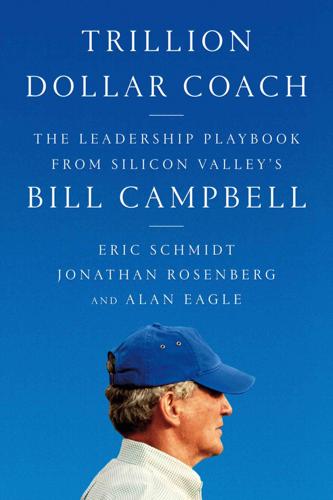
Trillion Dollar Coach: The Leadership Playbook of Silicon Valley's Bill Campbell
by
Eric Schmidt
,
Jonathan Rosenberg
and
Alan Eagle
Published 15 Apr 2019
Bill had been a transcendent figure in the technology business since moving west in 1983, playing a critical role in the success of Apple, Google, Intuit, and numerous other companies. To say he was tremendously respected would be a gross understatement—loved is more like it. Among the audience that day were dozens of technology leaders—Larry Page. Sergey Brin. Mark Zuckerberg. Sheryl Sandberg. Tim Cook. Jeff Bezos. Mary Meeker. John Doerr. Ruth Porat. Scott Cook. Brad Smith. Ben Horowitz. Marc Andreessen. Such a concentration of industry pioneers and power is rarely seen, at least not in Silicon Valley. We—Jonathan Rosenberg and Eric Schmidt—sat among the audience, making subdued small talk, soft sunshine contrasting with the somber mood.
…
Bollinger Todd Bradley Sergey Brin Shona Brown Eve Burton Al Butts Derek Butts Bruce Chizen Jared Cohen Scott Cook Dick Costolo Eddy Cue John Doerr John Donahoe Mickey Drexler David Drummond Donna Dubinsky Joe Ducar Brad Ehikian Alan Eustace Bruno Fortozo Pat Gallagher Dean Gilbert Alan Gleicher Al Gore Diane Greene Bill Gurley John Hennessy Ben Horowitz Bradley Horowitz Mark Human Chad Hurley Jim Husson Bob Iger Eric Johnson Andrea Jung Salar Kamangar Vinod Khosla Dave Kinser Omid Kordestani Scotty Kramer Adam Lashinsky Ronnie Lott Marissa Mayer Marc Mazur Mike McCue Mary Meeker Shishir Mehrotra Emil Michael Michael Moe Larry Page Sundar Pichai Patrick Pichette Peter Pilling Ruth Porat Jeff Reynolds Jesse Rogers Dan Rosensweig Wayne Rosing Jim Rudgers Sheryl Sandberg Philip Schiller Philipp Schindler Chadé Severin Danny Shader Ram Shriram Brad Smith Esta Stecher Dr.
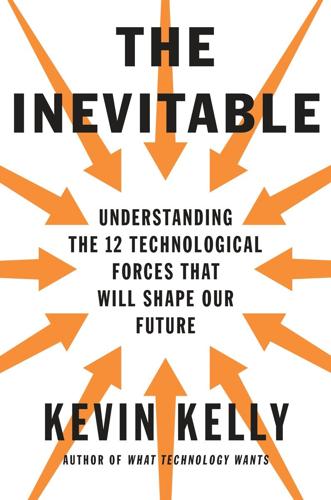
The Inevitable: Understanding the 12 Technological Forces That Will Shape Our Future
by
Kevin Kelly
Published 6 Jun 2016
“All Time Box Office,” Box Office Mojo, accessed August 7, 2015. 100 million short video clips: Mary Meeker, “Internet Trends 2014—Code Conference,” Kleiner Perkins Caufield & Byers, 2014. Iron Editor challenge: “Sakura-Con 2015 Results (and Info),” Iron Editor, April 7, 2015; and Neda Ulaby, “‘Iron Editors’ Test Anime Music-Video Skills,” NPR, August 2, 2007. than with traditional cinematography: Michael Rubin, Droidmaker: George Lucas and the Digital Revolution (Gainesville, FL: Triad Publishing, 2005). 1.5 trillion photos posted: Mary Meeker, “Internet Trends 2014—Code Conference,” Kleiner Perkins Caufield & Byers, 2014.
…
“composed entirely of free agents”: Roshni Jayakar, “Interview: John Perry Barlow, Founder of the Electronic Frontier Foundation,” Business Today, December 6, 2000, accessed July 30, 2015, via Internet Archive, April 24, 2006. ranked by the increasing degree of coordination: Clay Shirky, Here Comes Everybody: The Power of Organizing Without Organizations (New York: Penguin Press, 2008). 1.8 billion per day: Mary Meeker, “Internet Trends 2014—Code Conference,” Kleiner Perkins Caufield & Byers, 2014. billions of videos served by YouTube: “Statistics,” YouTube, accessed June 24, 2015. millions of fan-created stories: Piotr Kowalczyk, “15 Most Popular Fanfiction Websites,” Ebook Friendly, January 13, 2015.
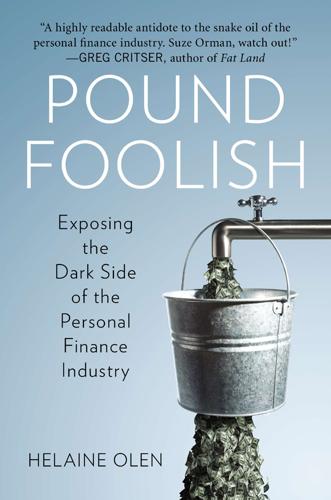
Pound Foolish: Exposing the Dark Side of the Personal Finance Industry
by
Helaine Olen
Published 27 Dec 2012
As Financial Finesse CEO: Liz Davidson, “Nice Girls Talk About Estate Planning,” Forbes.com, http://www.forbes.com/northwesternmutual/3-reasons-why-men.html; “Financial Finesse Special Report: The Gender Gap in Financial Literacy,” June 15, 2011. In 2009, the researchers behind this theory: Sheelah Kolhatkar, “What if Women Ran Wall Street?” New York Magazine, March 21, 2010, http://nymag.com/news/businessfinance/64950. John Coates, please meet: John Cassidy, “Mary Meeker Moves On,” Rational Irrationality, New Yorker, November 29, 2010, http://www.newyorker.com/online/blogs/johncassidy/2010/11/mary-meeker-moves-on.html According to Hearts & Wallets: “Are Women Investors Hard-Hearted: Why Women Expect More than Men From Financial Services Firms and What They Want,” Hearts & Wallets.com, February 7, 2012, http://heartsandwallets.com/are-women-investors-hard-hearted/news/2012/02.
…
We might not have money, but we would never get into a mess like this! But embracing this theory means ignoring many inconvenient facts. John Coates, for one, said he got interested in the differences between men and women investors because “I noticed that women did not buy into the dot-com bubble at all.” John Coates, please meet Mary Meeker, the Morgan Stanley banker who was dubbed “the Queen of the Net” for her role in the dot-com bubble and was recently described by John Cassidy, who profiled her in the New Yorker, as “a true believer.” Moreover, much is made of the fact that the chief whistleblower in the Iceland fiscal fiasco was a woman, leaving one to wonder if whistleblowers such as Bernard Madoff–nemesis Harry Markopolos and Lehman Brothers’ practically forgotten Matthew Lee (who lost his job for his troubles) should be considered chopped liver.

Frenemies: The Epic Disruption of the Ad Business
by
Ken Auletta
Published 4 Jun 2018
By 2015, Facebook’s size as translated by its market cap or worth was equal to General Electric’s; by 2016, its market cap zoomed past the world’s fourth most-valued corporation, ExxonMobil. By the end of 2016, Facebook collected $27 billion from ads, and basked in profits of $10 billion. Facebook and Google’s size advantage was revealed in the first quarter of 2016 when Mary Meeker of Kleiner Perkins Caufield Byers reported that of every new digital ad dollar, eighty-five cents went to Facebook and Google. Their digital dominance increasingly mattered because digital advertising by 2017 was expected to surpass the $70 billion spent on the number one U.S. ad platform, television.
…
Mobile is not just “an extension of digital, just a way to reach consumers,” he said. It is perhaps the most important channel to consumers “that has been developed, and it changes the way you live your life, by virtue of the fact that it is always on, it’s 24/7, and we’ve never had this.” In her much-anticipated annual presentation on “The State of the Web,” Mary Meeker of Kleiner Perkins Caufield Byers reported that mobile phone users had rocketed from 80 million worldwide in 1995 to 5.2 billion in 2014, or three quarters of the earth’s population. “We have never in history adopted a technology faster,” Carolyn Everson told a CES audience in January 2016, noting that it took radio thirty-eight years to reach 50 million people and television only thirteen years.
…
* Shoshana Zuboff, “The Secrets of Surveillance Capitalism,” Frankfurter Allgemeine, March 5, 2016. * Sandy Parakilas, “Facebook Won’t Protect Your Privacy,” New York Times op-ed page, November 20, 2017. * As we see, data on the size of the ad-blocking community vary wildly. * The disparity between Mary Meeker’s figure of 5.2 billion mobile phones and Carolyn Everson’s figure of 7.2 billion is a reminder that gathering global data involves some guesswork. * Again, not an exact science; Nielsen defines millennials as age eighteen to thirty-four. * Michael Schudson, Advertising, The Uneasy Persuasion: Its Dubious Impact on American Society (New York: Basic Books, 1984)

A Random Walk Down Wall Street: The Time-Tested Strategy for Successful Investing
by
Burton G. Malkiel
Published 10 Jan 2011
In 2002, he neglected to write that it was also the greatest legal destruction of wealth on the planet. Source: Doonesbury © 1998 G. B. Trudeau. Reprinted by permission of Universal Uclick. All rights reserved. Security Analysts $peak Up Wall Street’s high-profile securities analysts provided much of the hot air floating the Internet bubble. Mary Meeker of Morgan Stanley, Henry Blodgett of Merrill Lynch, and Jack Grubman of Salomon Smith Barney became household names and were accorded superstar status. Meeker was dubbed by Barron’s the “Queen of the ’Net.” Blodgett was known as “King Henry,” while Grubman acquired the sobriquet “Telecom Guru.” Like sports heroes, each of them was earning a multimillion-dollar salary.
…
Grubman was ridiculed before a congressional committee for his continuous touting of WorldCom stock and investigated by Attorney General Spitzer for changing his stock ratings to help obtain investment banking business. Both Blodgett and Grubman left their firms. Fortune magazine summed it all up with a picture of Mary Meeker on the cover and the caption “Can We Ever Trust Wall Street Again?” New Valuation Metrics In order to justify ever higher prices for Internet-related companies, security analysts began to use a variety of “new metrics” that could be used to value the stocks. After all, the New Economy stocks were a breed apart—they should certainly not be held to the fuddy-duddy old-fashioned standards such as price-earnings multiples that had been used to value traditional old-economy companies.
…
Somehow, in the brave new Internet world, sales, revenues, and profits were irrelevant. In order to value Internet companies, analysts looked instead at “eyeballs”—the number of people viewing a Web page or “visiting” a Web site. Particularly important were numbers of “engaged shoppers”—those who spent at least three minutes on a Web site. Mary Meeker gushed enthusiastically about Drugstore.com because 48 percent of the eyeballs viewing the site were “engaged shoppers.” No one cared whether the engaged shopper ever forked over any greenbacks. Sales were so old-fashioned. Drugstore.com hit $67.50 during the height of the bubble of 2000. A year later, when eyeballs started looking at profits, it was a “penny” stock.

How We Got Here: A Slightly Irreverent History of Technology and Markets
by
Andy Kessler
Published 13 Jun 2005
HOW WE G O T H ER E A Slightly Irreverent History of Technology and Markets A Silicon Valley and Wall Street Primer To order a copy of this book, click: http://rcm.amazon.com/e/cm?t=andykessler20&o=1&p=8&l=as1&asins=0060840978&fc1=000000&=1&lc1=00 00ff&bc1=000000<1=_blank&IS2=1&f=ifr&bg1=ffffff&f=ifr ALSO BY ANDY KESSLER Wall Street Meat: Jack Grubman, Frank Quattrone, Mary Meeker, Henry Blodget and me Running Money: Hedge Fund Honchos, Monster Markets and My Hunt for the Big Score Coming in 2006: The End of Medicine: Tales of Naked Mice, 3D Guts and Rebooting Doctors How We Got Here A Silicon Valley and Wall Street Primer . A Slightly Irreverent History of Technology And Markets Andy Kessler Copyright © 2005 by Andy Kessler All rights reserved, including the right of reproduction in whole or in part in any form.
…
Standage, Tom, 1998, The Victorian Internet – The Remarkable Story of the Telegraph and the Nineteenth Century On-Line Pioneers, Berkeley Sylla, Richard, 1998, The First Great IPO, Financial History Magazine Issue, 64 Thurston, Robert, 1878, A History of the Growth of the Steam-Engine Weightman, Gavin, 2003, Signor Marconi’s Magic Box – The Most Remarkable Invention of the 19th Century and the Amateur Inventor Whose Genius Sparked a Revolution, Da Capo Press About the Author Andy Kessler is a former electrical engineer turned Wall Street analyst turned investment banker turned venture capitalist turned hedge fund manager turned writer and author. His book Wall Street Meat: Jack Grubman, Frank Quattrone, Mary Meeker, Henry Blodget and me was published in March of 2003. The follow on, Running Money: Hedge Fund Honchos, Monster Markets and My Hunt for the Big Score, was published by HarperCollins in September of 2004. Andy is a frequent contributor to the Wall Street Journal op-ed page and has written for Forbes Magazine, Wired, the LA Times, and The American Spectator magazine as well as techcentralstation.com and thestreet.com websites.
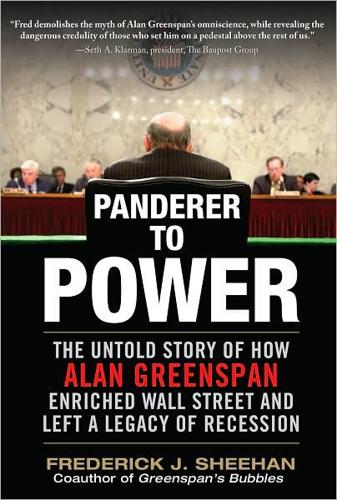
Panderer to Power
by
Frederick Sheehan
Published 21 Oct 2009
This was in January 2001. 21 Jonathan Fuerbringer, “Nasdaq in Comeback, Surging Almost 8%,” New York Times, October 14, 2000, p. C1. 22 FOMC meeting transcript, October 3, 2000, p. 76. In late 1998, a cheery Mary Meeker, star technology analyst at Morgan Stanley, graced the front cover of Barron’s with the title: “Queen of the ’Net.” In December 1999, a Wall Street Journal editorial chastised her: “When Web companies openly admit they gave their IPO business to Morgan Stanley hoping to get a favorable tout from Mary Meeker, you have to wonder whom the analysts are really working for.”23 The Journal was not thrilled with how other analysts composed their “Buy” lists: “The news last week, moreover, wasn’t that Jack Grubman, Salomon [Smith Barney]’s top-rated telecom analyst, had become a believer in AT&T’s cable strategy.24 The news was that his change of heart came just as Salomon was pitching for work as an underwriter of AT&T’s wireless tracking stock.”25 In May 2000, Grubman told BusinessWeek the conflict of interest that so disturbed the Journal had been resolved: “What used to be a conflict is now a synergy.”26 At the November 15, 2000, meeting, Greenspan cited analysts, with reservations: “If we take the I/B/E/S data, which is really the best we have on profit expectations, real or crazy, those numbers have not changed.”
…
Greenspan wondered if “the SEC’s financial disclosure requirement … may have had a major inhibiting effect on the ability of corporate executives to communicate to security analysts.”25 This was the least of the analysts’ limitations. The March 20, 2001, Financial Times had published an article with the title “Shoot All the Analysts.” In May 2001, Barron’s illustrated its cover with a drawing of Mary Meeker accompanied by the title: “How to Fix Wall Street’s Research Problem.”26 The March 8, 2001, Wall Street Journal reported that Morgan Stanley had received $479.6 million of investment banking fees for underwriting IPOs and follow-on offerings in 1998–2000. Meeker told the Journal that “she wasn’t seduced by the fat fees she and her firm stood to earn on the deals she helped push.”27 Salomon Smith Barney technology analyst Jack Grubman did not seem to tire of degrading his profession, or at least himself, with such commendably honest comments as: “Let’s call a spade a spade.
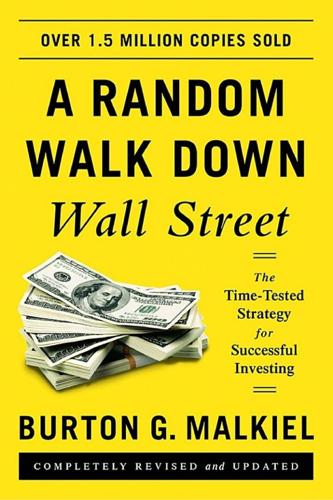
A Random Walk Down Wall Street: The Time-Tested Strategy for Successful Investing (Eleventh Edition)
by
Burton G. Malkiel
Published 5 Jan 2015
In 2002, he neglected to write that it was also the greatest legal destruction of wealth on the planet. Source: Doonesbury © 1998 G. B. Trudeau. Reprinted with permission of UNIVERSAL UCLICK. All rights reserved. Security Analysts $peak Up Wall Street’s high-profile securities analysts provided much of the hot air floating the Internet bubble. Mary Meeker of Morgan Stanley, Henry Blodgett of Merrill Lynch, and Jack Grubman of Salomon Smith Barney became household names and were accorded superstar status. Meeker was dubbed by Barron’s the “Queen of the ’Net.” Blodgett was known as “King Henry,” while Grubman acquired the sobriquet “Telecom Guru.” Like sports heroes, each of them was earning a multimillion-dollar salary.
…
Blodgett was renamed the “clown prince” of the Internet bubble by the New York Post. Grubman was ridiculed before a congressional committee for his continuous touting of WorldCom stock and investigated for changing his stock ratings to help obtain investment banking business. Both Blodgett and Grubman left their firms. Fortune magazine summed it all up with a picture of Mary Meeker on the cover and the caption “Can We Ever Trust Wall Street Again?” New Valuation Metrics In order to justify ever higher prices for Internet-related companies, security analysts began to use a variety of “new metrics” that could be used to value the stocks. After all, the New Economy stocks were a breed apart—they should certainly not be held to the fuddy-duddy old-fashioned standards such as price-earnings multiples that had been used to value traditional old-economy companies.
…
Somehow, in the brave new Internet world, sales, revenues, and profits were irrelevant. In order to value Internet companies, analysts looked instead at “eyeballs”—the number of people viewing a web page or “visiting” a website. Particularly important were numbers of “engaged shoppers”—those who spent at least three minutes on a website. Mary Meeker gushed enthusiastically about Drugstore.com because 48 percent of the eyeballs viewing the site were “engaged shoppers.” No one cared whether the engaged shopper ever forked over any greenbacks. Sales were so old-fashioned. Drugstore.com hit $67.50 during the height of the bubble of 2000. A year later, when eyeballs started looking at profits, it was a “penny” stock.

Money Mavericks: Confessions of a Hedge Fund Manager
by
Lars Kroijer
Published 26 Jul 2010
Another thing that had appealed to me was the absence of boiler-room talk that I had encountered elsewhere. One guy had sat me down in his office and stared at me in silence for about a minute before saying: ‘Lars – do you wanna be rich? Like really rich? I have a collection of old cars and a $20-million Hamptons mansion down the road from Mary Meeker and I can make you rich’, before telling me about his day-trading scheme. By contrast, Peter seemed like a studious investor who loved the research process and matched his analysis with market savvy to make a lot of money for his investors. Another potential employer had walked into the interview room, thrown a packet of Marlboro cigarettes on the table, saying: ‘I’ll be back in five minutes – find me the number 76 on the package’ and left without a word (if you hold the lid of the package up against the light and look at it from the inside, the ‘a’ and ‘r’ in Marlboro look like a ‘76’).
…
With higher assets under management and the promise of greater volume to trade, we were also able to reduce our commission rates. The commission dollars did not bring us into the big leagues of massive hot IPO (initial public offering) allocations or calls about the development of new technologies from Mary Meeker, but in our little world they made a big difference. We could now call analysts from all the research houses and expect to have them walk us through their analysis and discuss companies or industries for hours. Often you would hear the analyst looking you up on the internal system before committing to talk to you.
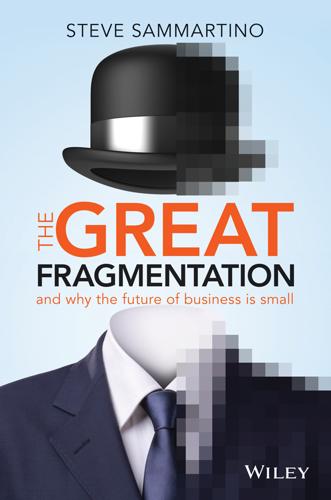
The Great Fragmentation: And Why the Future of All Business Is Small
by
Steve Sammartino
Published 25 Jun 2014
What it means for business Selling what was sold yesterday always leads to lower prices. Making connections between the seemingly disparate is where new revenue and margins now live. Notes 1 www.cameracuriosities.com/2012/02/dycam-model-1.html 2 ‘The Best of Mary Meeker’s 2013 Internet Trends Slides’, May 2013: http://allthingsd.com/20130529/the-best-of-mary-meekers-2013-internet-trends-slides 3 www.abs.gov.au CHAPTER 8 A zero-barrier world: how access to knowledge is breaking down barriers For most of the industrial era the only option for having goods and services was to own them. If we wanted to have anything, we had to buy it.

Dogfight: How Apple and Google Went to War and Started a Revolution
by
Fred Vogelstein
Published 12 Nov 2013
During the third quarter of 2012: Philip Elmer-DeWitt, “Chart of the Day: Apple iPhone vs. Samsung Galaxy Sales,” CNN Money, 3/16/2013. Apple has even begun replacing: Shira Ovide, “Apple Boots Google for Microsoft in Siri” (Digits blog), Wall Street Journal, 6/10/2013. Today, 1.8 billion cell phones: “Worldwide Mobile Phone Sales Fell in 2012: Gartner,” Reuters, 2/13/2013; Mary Meeker and Liang Wu, “Internet Trends: D11 Conference,” www.kpcb.com/insights/2013-internet-trends, 5/29/2013. Although most people don’t think: “iTunes Continues to Dominate Music Retailing, but Nearly 60 Percent of iTunes Music Buyers Also Use Pandora,” NPD Group press release, 9/18/2012; “As Digital Video Gets Increasing Attention, DVD and Blu-ray Earn the Lion’s Share of Revenue,” NPD Group press release, 1/30/2013; Colin Dixon, “How Valuable Is Apple to the Movie Business?
…
Then, in 2008, it released Chrome: Steven Levy, “Inside Chrome: The Secret Project to Crush IE and Remake the Web,” Wired, 9/2/2008. 6. Android Everywhere “It [Android] is”: Brad Stone, “Google’s Andy Rubin on Everything Android” (Bits blog), New York Times, 4/27/2010. It was as if little else: This data comes from Google financial statements as well as from annual presentations by Mary Meeker, the former Wall Street technology analyst and current partner of venture capital firm Kleiner Perkins Caufield & Byers. An electronic poll: I witnessed this poll at the Fortune Brainstorm TECH conference in Aspen, July 2010. “We have a product that allows”: This is from a presentation I saw Schmidt give at the DLD annual technology conference in Munich in January 2011.

The Internet Is Not the Answer
by
Andrew Keen
Published 5 Jan 2015
On November 5, 1999, the day of its IPO, Webvan was valued at almost $8 billion.33 A little over a year and a half later, on July 10, 2001, Webvan filed for bankruptcy protection and shut down. In spite of the Webvan disaster, the winner-take-all model had a particular resonance in the e-commerce sector, where the so-called Queen of the Net, the influential Morgan Stanley research analyst Mary Meeker (who is now a partner at KPCB), saw first-mover advantage as critical in dominating online marketplaces. And it was this winner-take-all thinking that led Jeff Bezos, in 1996, to accept an $8 million investment from John Doerr in exchange for 13% of Amazon, a deal that valued the year-old e-commerce startup at $60 million.34 “The cash from Kleiner Perkins hit the place like a dose of entrepreneurial steroids, making Jeff more determined than ever,” noted one early Amazon employee about the impact of the 1996 KPCB investment.35 “Get Big Fast” immediately became Bezos’s mantra.
…
Which is exactly what he did, with Amazon’s value growing to over $150 billion by June 2014, making the Everything Store by far the dominant retailer on the Internet, crushing or acquiring its competitors, monopolizing the mental shelf space of online consumers, selling everything from books, baby gear, and beauty products to shoes, software, and sporting goods. Mary Meeker was right about first-mover advantage on the Internet and its consequence of a winner-take-all economy dominated by a coterie of massively powerful global companies. What Kevin Kelly incorrectly predicted as the Internet’s “decentralized ownership and equity” structure has, in fact, turned out to be a rigidly centralized economy controlled by what Fred Wilson, the New York City–based cofounder of Union Square Ventures and one of the smartest early-stage investors in the Internet economy, calls “dominant networks that are emerging all around us,” like “Google, Twitter, YouTube, SoundCloud [and] Uber.” 36 Wilson explains that “for all of its democratizing power, the Internet, in its current form, has simply replaced the old boss with a new boss and these new bosses have market power that, in time, will be vastly larger than that of the old boss.”37 The rules of this new economy are thus those of the old industrial economy—on steroids.
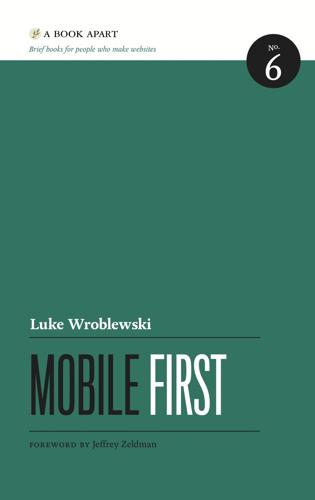
Mobile First
by
Luke Wroblewski
Published 4 Oct 2011
Perhaps she was the only one, which is why this book is lovingly dedicated to her. Resources More data, please Morgan Stanley’s Mobile Internet Report was a huge source of supporting facts and information for me. It’s filled with hundreds of slides with data about the biggest trends in mobile (http://bkaprt.com/mf/58). Mary Meeker was the primary author of the Mobile Internet Report and has gone on to publish more of her findings in her new role at Kleiner Perkins (http://bkaprt.com/mf/59). For ongoing mobile market information and data, keep up with Horace Dediu’s articles and pointers on Asymco (http://bkaprt.com/mf/60).
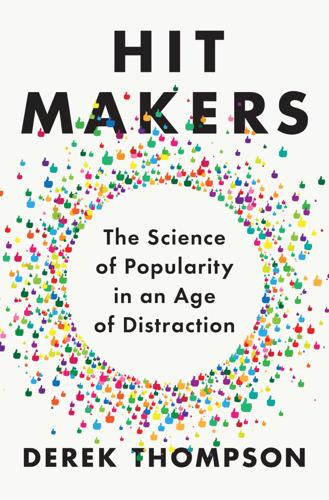
Hit Makers: The Science of Popularity in an Age of Distraction
by
Derek Thompson
Published 7 Feb 2017
In the big picture, the world’s attention is shifting from content that is infrequent, big, and broadcast (i.e., millions of people going to the movies once a week) to content that is frequent, small, and social (i.e., billions of people looking at social media feeds on their own glass-and-pixel displays every few minutes). As late as 2000, the media landscape was dominated by one-to-one-million productions, on movie screens, television screens, and car radios. But ours is a mobile world, where hits, like Angry Birds, and empires, like Facebook, thrive on tiny glassy plates. In 2015, the technology analyst Mary Meeker reported that one quarter of America’s media attention is devoted to mobile devices that did not exist a decade ago. Television is not dying so much as it is pollinating a billion video streams on a variety of screens, most of which people can carry in their hands. Television once freed “moving images” from the clutches of the cineplex; in the historical sequel, mobile technology is emancipating video from the living room.
…
more profit from cable channels: Derek Thompson, “The Global Dominance of ESPN,” The Atlantic, September 2013. spent more time interacting: “2013 Internet Trends Report,” www.kpcb.com/blog/2013-internet-trends. eighty square inches for every living human: Benedict Evans Blog, http://ben-evans.com/benedictevans/2014/1/3/the-spread-of-glass. technology analyst Mary Meeker reported: “2016 Internet Trends Report,” www.kpcb.com/blog/2016-internet-trends-report. Part I: Popularity and the Mind Chapter 1: The Power of Exposure “the least known of the French impressionists”: “Gustave Caillebotte: The Painter’s Eye,” National Gallery of Art, www.nga.gov/content/ngaweb/exhibitions/2015/gustave-caillebotte.html.

file:///C:/Documents%20and%...
by
vpavan
Morgan Stanley's corporate finance director summed up the prevailing view as far back as 1990, when he wrote in a memo to the research department: "Our objective is . . . to adopt a policy, fully understood by the entire Firm, including the Research Department, that we do not make negative or controversial comments about our clients as a matter of sound business practice. . . ." Morgan Stanley has since disavowed the memo, saying it does not reflect company policy. But consider the case of Morgan's star Internet analyst, Mary Meeker, dubbed "Queen of the Net" by one financial magazine. Meeker wrote long, detailed reports on high-flying Internet companies such as eBay, Yahoo, and Amazon.com, and was highly sought after by tech companies because she had the stature to make their IPOs successful. According to NASD rules, analysts must have a sound basis for their recommendations.
…
Such deals pay analysts far more than they could earn from research alone. Some unhappy investors are daring to make this very point in legal complaints about analysts' unbridled optimism. In one well-known case, pediatrician Debases Kanjilal filed an arbitration case against Merrill Lynch's Henry Blodget. Like Mary Meeker, Blodget epitomized the Internet frenzy. He was a frequent commentator on the CNBC and CNN cable news shows, appearing on TV at least seventy-seven times in 1999. Kanjilal claimed that Blodget misled him by maintaining bullish recommendations on InfoSpace Inc., a provider of information services over the Internet, throughout 2000, despite the stock's rapidly eroding price.

Free Speech: Ten Principles for a Connected World
by
Timothy Garton Ash
Published 23 May 2016
POST-GUTENBERG 1. in the age of the ‘mobile internet’, increasingly accessed from smartphones, it is difficult to say precisely how many people have internet access. The International Telecommunication Union (ITU) gave an estimate of 3.2 billion for 2015; see ‘ICT Facts and Figures—The World in 2015’, ITU, http://perma.cc/K5QM-T3PC. Mary Meeker, in her influential annual Internet Trends presentation, gave a figure of 2.8 billion in May 2015; see Mary Meeker, ‘Internet Trends 2015—Code Conference’, KPCB, 27 May 2015, http://perma.cc/GB7E-NQMX. For a mesmerising although obviously not precise live counter see ‘Internet users in the world’, internet live stats, http://www.internetlivestats.com/watch/internet-users/ 2. in the second quarter of 2015, Facebook reported 1.49 billion active users (those who logged in at least once a month), while the population of China was estimated at 1.3 billion.
…
Or if you prefer it another way, it may be a large screen in the corner of your living room, or a small device attached to your wrist or a chip implanted inside your skull. Figure 5 shows, in round figures, the main stages on this path to a connected world. Figure 5. More devices than people Source: Adapted from Mary Meeker, Internet Trends 2014. Since the satirical umlauts of Shteyngart’s äppäräti could begin to pall, I refer throughout this book to that universal communication device simply as your ‘box’. And I use the word ‘internet’, with a lowercase i, in a deliberately broad sense, to denote the whole of this worldwide information and communications network—its universality still seriously limited by political, legal, cultural and economic constraints, but not by technological ones.
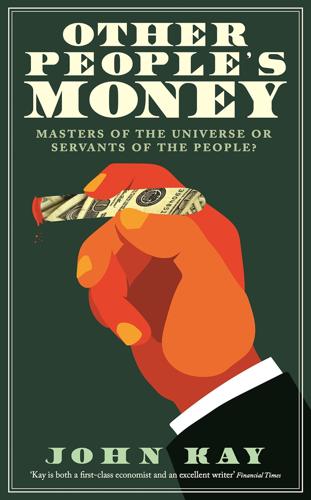
Other People's Money: Masters of the Universe or Servants of the People?
by
John Kay
Published 2 Sep 2015
Privatisation and capital market liberalisation contributed to both national and international financialisation. The internet came to the educated public, and the financial community, in the 1990s. The dot.com boom began in 1995 with the publication of a research note pointing out the commercial opportunities of the internet from Mary Meeker of Morgan Stanley (who would become known as ‘the internet goddess’) and the flotation of Netscape (which devised the first accessible internet browser).23 By 1999 journalists, consultants and business people talked of a ‘new economy’. Businesses that had never made a penny of profit, and never would, were floated on world stock exchanges at fantastic valuations.
…
Since the funds financed start-up losses, the finance involved necessarily took the form of equity, and initially neither investment banks nor retail banks were involved. When the new economy bubble inflated in the 1990s, investment banks aggressively sought mandates to take Silicon Valley business public. Morgan Stanley’s ‘internet goddess’, Mary Meeker, was a pioneer, and Frank Quattrone of Crédit Suisse First Boston was another prominent figure. The ‘new economy’ bubble burst in 2000, and Quattrone would soon spend more time in court than in investor presentations. The operations of the ‘four horsemen’ were subsumed into other divisions of the banks that had acquired them.
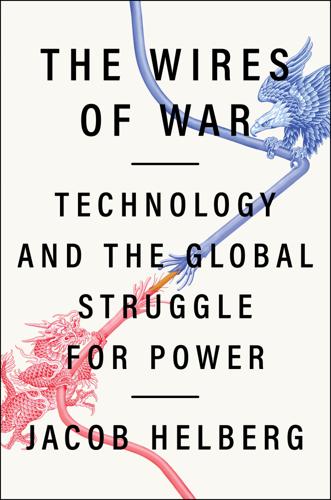
The Wires of War: Technology and the Global Struggle for Power
by
Jacob Helberg
Published 11 Oct 2021
S&E Enterprise in a Global Context,” National Science Foundation, https://www.nsf.gov/statistics/2018/nsb20181/report/sections/overview/workers-with-s-eskills. 50 Jane Croft, “China plays catch-up with Europe and US in patents filing race,” Financial Times, July 9, 2019, https://www.ft.com/content/8ecf7464-8d05-11e9-b8cb-26a9caa9d67b. 51 “Charting a Course for Success: America’s Strategy for Stem Education,” National Science and Technology Council, December 2018, https://www.energy.gov/sites/prod/files/2019/05/f62/STEM-Education-Strategic-Plan-2018.pdf. 52 “2019 1st Quarter Manufacturers’ Outlook Survey,” National Association of Manufacturers, https://www.nam.org/2019-1st-quarter-manufacturers-outlook-survey/. 53 Glenn Leibowitz, “Apple CEO Tim Cook: This Is the No. 1 Reason We Make iPhones in China (It’s Not What You Think),” Inc., December 21, 2017, https://www.inc.com/glenn-leibowitz/apple-ceo-tim-cook-this-is-number-1-reason-we-make-iphones-in-china-its-not-what-you-think.html. 54 “Recommendations for Strengthening American Leadership in Industries of the Future.” 55 O’Mara, The Code, 389. 56 “The Global AI Talent Tracker,” MacroPolo, https://macropolo.org/digital-projects/the-global-ai-talent-tracker/. 57 Sara Salinas, “Mary Meeker just presented 294 slides on the future of the internet—read them here,” CNBC, May 30, 2018, https://www.cnbc.com/2018/05/30/mary-meekers-internet-trends-2018.html. 58 Ruchir Sharma, “The Comeback Nation,” Foreign Affairs, May 2020, https://www.foreignaffairs.com/articles/united-states/2020-03-31/comeback-nation. 59 Stuart Anderson, “Trump Cuts Legal Immigrants By Half and He’s Not Done Yet,” Forbes, July 21, 2020, https://www.forbes.com/sites/stuartanderson/2020/07/21/trump-cuts-legal-immigrants-by-half-and-hes-not-done-yet/#4446d3f46168. 60 “Suspension of Entry of Immigrants Who Present a Risk to the United States Labor Market During the Economic Recovery Following the 2019 Novel Coronavirus Outbreak,” The White House, April 22, 2020, https://www.federalregister.gov/documents/2020/04/27/2020-09068/suspension-of-entry-of-immigrants-who-present-a-risk-to-the-united-states-labor-market-during-the. 61 Laura Collins and Matthew Denhart, “Policy Recommendations: Modernizing Immigration for Today’s Realities,” George W.

The Driver in the Driverless Car: How Our Technology Choices Will Create the Future
by
Vivek Wadhwa
and
Alex Salkever
Published 2 Apr 2017
Mat Honan, “How Apple and Amazon security flaws led to my epic hacking,” WIRED 6 August 2012, https://www.wired.com/2012/08/apple-amazon-mat-honan-hacking (accessed 21 October 2016). 6. Kevin Kelley, The Inevitable, Viking: New York, 2016. CHAPTER TEN 1. Jonathan Vanian, “7-Eleven Just Used a Drone to Deliver a Chicken Sandwich and Slurpees,” Fortune 22 July 2016, http://fortune.com/2016/07/22/7-eleven-drone-flirtey-slurpee (accessed 21 October 2016). 2. Mary Meeker, “Internet Trends 2015—Code Conference,” Kleiner Perkins Caulfield & Byers, http://www.kpcb.com/blog/2015-internet-trends. 3. Chris Anderson, “How I accidentally kickstarted the domestic drone boom,” WIRED 22 June 2012, http://www.wired.com/2012/06/ff_drones (accessed 21 October 2016). 4. “Malawi tests first unmanned aerial vehicle flights for HIV early infant diagnosis,” UNICEF 14 March 2016, http://www.unicef.org/media/media_90462.html (accessed 21 October 2016). 5.

The Network Imperative: How to Survive and Grow in the Age of Digital Business Models
by
Barry Libert
and
Megan Beck
Published 6 Jun 2016
Tammy Erickson, “The Rise of the New Contract Worker,” HBR.org, September 7, 2012, https://hbr.org/2012/09/the-rise-of-the-new-contract-worker/. 7. Mike Myatt, “10 Reasons Your Top Talent Will Leave You,” Forbes, December 13, 2012, http://www.forbes.com/sites/mikemyatt/2012/12/13/10-reasons-your-top-talent-will-leave-you/#39274873a149. 8. Mary Meeker, “Internet Trends 2015—Code Conference,” KPCB, May 27, 2015, http://www.kpcb.com/internet-trends. Principle 8, Measurement 1. Bernard Marr, “Big Data at Dickey’s Barbecue Pit: How Analytics Drives Restaurant Performance,” Forbes, June 2, 2015, http://www.forbes.com/sites/bernardmarr/2015/06/02/big-data-at-dickeys-barbecue-pit-how-analytics-drives-restaurant-performance/#34a989da3514. 2.
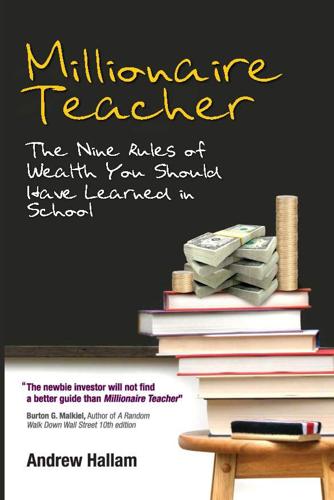
Millionaire Teacher: The Nine Rules of Wealth You Should Have Learned in School
by
Andrew Hallam
Published 1 Nov 2011
They probably didn’t know that it’s not realistic for businesses to grow their earnings by 150 percent a year—year after year, no matter what the business is. And if businesses can’t grow earnings by 150 percent on an annual basis, then their stocks can’t either. Some of the more famous promoters at the time were such high-profile financial analysts as Morgan Stanley’s Mary Meeker, Merrill Lynch’s Henry Blodgett, and Solomon Smith Barney’s Jack Grubman. But they might have a tough time showing their faces today. For all I know, the top Internet stock analysts of the 1990s are finding a safer, more peaceful existence in the jungles of Borneo. I can imagine a few people wanting their heads.

Manias, Panics and Crashes: A History of Financial Crises, Sixth Edition
by
Kindleberger, Charles P.
and
Robert Z., Aliber
Published 9 Aug 2011
Should the award of options to senior management and employees be considered a cost, like wages, or should the award be buried in a footnote so that costs and profits are not affected? The answer affects how rapidly profits increase and presumably how rapidly the stock prices will increase. Should Henry Blodgett and Mary Meeker and Jack Grubman, the gurus of the telecom firms and dot.coms in the 1990s, have been obliged to inform the investing public of the rationale for their forecasts for the increases in the prices of individual stocks, or was it sufficient for them to announce the price targets for each firm at the end of the next six and twelve months – more or less like touts at the racetrack?
…
If you are at the racetrack, you know that the touts that want to sell you their list of winners are not likely to pass the boy scouts’ code of honor when they describe how many winners they have picked in the last several days and the last week – somehow your intuition suggests that if they were half as successful as they claim they are, they would not be hustling their tip sheets. But what interpretation should you place on the statements of the touts for Merrill and Morgan Stanley and Credit Suisse when they indicate their price targets for the shares of individual firms? In a good year in the late 1990s Henry Blodgett earned $10 million, Mary Meeker $15 million and Jack Grubman $20 million. Henry, Mary and Jack were the apostles of the dot.coms and the telecommunications firms in the bubble years of the 1990s. They earned these rock-star incomes because they brought a lot of underwriting and trading business to their Wall Street employers.
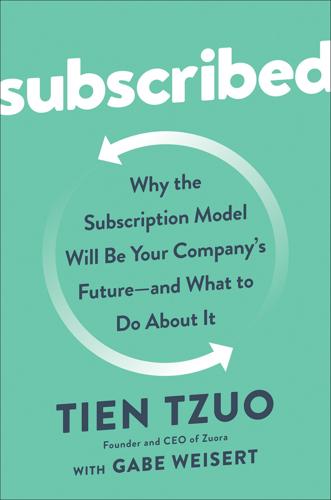
Subscribed: Why the Subscription Model Will Be Your Company's Future - and What to Do About It
by
Tien Tzuo
and
Gabe Weisert
Published 4 Jun 2018
The iPhone is just over ten years old—think of the way that device has shaped how we use services. The cloud has profoundly reshaped the ways that companies think about IT infrastructure, professional services, and capex versus opex spending. This whole new world of connected devices definitely feels very new. And as Mary Meeker noted in her latest Internet Trends report, digital consumer subscriptions are exploding because of massive new improvements in digital user experiences, particularly for mobile phones. It feels like we’re at the beginning of something very big. So let’s explore some of the ways the subscription model is transforming every sector of the modern economy.
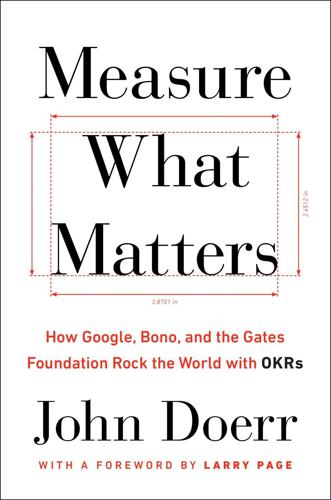
Measure What Matters: How Google, Bono, and the Gates Foundation Rock the World With OKRs
by
John Doerr
Published 23 Apr 2018
And I thank Walter Isaacson, biographer extraordinaire, whose good counsel and advice were instrumental as Measure What Matters began to take shape. I’d also like to thank my partners at Kleiner Perkins, whose commitment to entrepreneurs lifts me up every day: Mike Abbott, Brook Byers, Eric Feng, Bing Gordon, Mamoon Hamid, Wen Hsieh, Noah Knauf, Randy Komisar, Mary Meeker, Mood Rowghani, Ted Schlein, and Beth Seidenberg. Also, thanks to Sue Biglieri, Alix Burns, Juliet deBaubigny, Amanda Duckworth, Rouz Jazayeri, and Scott Ryles. And a special thanks to Rae Nell Rhodes, Cindy Chang, and Noelle Miraglia for their unflagging support, and Tina Case, who found the photographs that brought this book to life.

Tech Titans of China: How China's Tech Sector Is Challenging the World by Innovating Faster, Working Harder, and Going Global
by
Rebecca Fannin
Published 2 Sep 2019
Kleiner Perkins wound down its China activities after a team of investors departed in 2017 to form the new early-stage technology investment firm China Creation Ventures, operated in China for China. Kleiner Perkins is left with a skeleton crew in Shanghai to work on past investments. The departure of venture capitalist Mary Meeker from Kleiner Perkins in 2018 was another blow for any further plans for China. Meeker’s annual tech trends report under the Kleiner banner was bullish on China. Meeker is now investing from a fund for growth investment at her new firm, Bond. Connecting in Chengdu Venture investing requires identifying, researching, and funding passionate founders who dream big, innovate huge, and compete to win with the right team, the right sector, and the right business model.
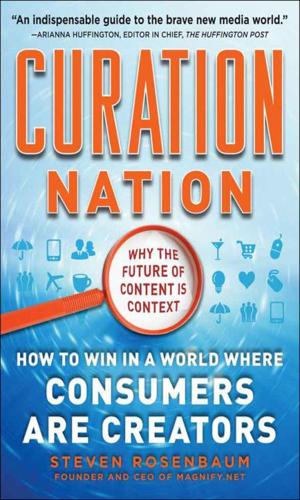
Curation Nation
by
Rosenbaum, Steven
Published 27 Jan 2011
It’s not a one-size-fits-all solution, and there are going to be some twists and turns along the way. LOOK AT THE BIG TRENDS In order to plan ahead and build a curation strategy that fits both your personal skills and the emerging billion-dollar opportunities, let’s set the trends in context. What Is Mobile? There may be no better analyst for Internet trends than Mary Meeker. She is currently a partner in the Silicon Valley venture capital firm of Kleiner Perkins Caulfield & Byers and formerly a managing director at Morgan Stanley, serving as head of the investment bank’s global technology research team. While at Morgan Stanley, her annual report on Web trends was carefully read and well respected.

The Cost of Inequality: Why Economic Equality Is Essential for Recovery
by
Stewart Lansley
Published 19 Jan 2012
In the United States, the fund management industry has been revealed time and again to be ‘skimming off’ value from investors. In 1999, stock analysts employed by investment banks were found to be deliberately plugging technology stocks knowing them to be over-valued. In its issue of May 14, 2001, Fortune magazine carried a picture of Mary Meeker—a superstar analyst with Morgan Stanley—on its cover with the headline ‘Can we ever trust Wall Street again?’ Henry Blodget, an internet stock analyst at Merrill Lynch and one of the most enthusiastic promoters of dotcom shares, continued to make wild predictions of future share values of companies like Amazon to clients in 1999 and 2000 even when the bubble was at its most overblown.

The New Class Conflict
by
Joel Kotkin
Published 31 Aug 2014
McGraw-Hill Research Foundation, “The Return on Investment (ROI) from Adult Education and Training,” May 9, 2011, http://mcgraw-hillresearchfoundation.org/2011/05/09/roi-adult-ed-and-training. 63. Jon Stiles, Michael Hout, and Henry Brady, “California’s Economic Payoff: Investing in College Access & Completion,” report, April 2012, http://alumni.berkeley.edu/sites/default/files/Californias_Economic_Payoff_Executive_Summary.pdf. 64. Mary Meeker, “USA Inc.: A Basic Summary of America’s Financial Statements,” report, Kleiner Perkins Caufield Byers, February 2011, http://images.businessweek.com/mz/11/10/1110_mz_49meekerusainc.pdf. 65. Mike Shedlock, “Ominous Looking Picture in Healthcare and Education Jobs,” Mish’s Global Economic Trend Analysis, February 7, 2014, http://globaleconomicanalysis.blogspot.com/2014/02/ominous-trends-in-healthcare-and.html. 66.

The Sharing Economy: The End of Employment and the Rise of Crowd-Based Capitalism
by
Arun Sundararajan
Published 12 May 2016
It’s called Getaround. (I came across Getaround quite by accident in 2011, and not while trying to boost a vehicle during an early morning school run. I’ll get to this in a few pages.) I thought about Getaround and my vision of Manhattan-wide seamless peer-to-peer car borrowing when, in December 2012, I read Mary Meeker’s supplement to her annual Internet Trends Report.1 Meeker, a pioneering technology analyst during the “dotcom” era of the late 1990s, has been issuing this influential annual report since 1995. Her supplement emphasized how we are now reimagining everything from interfaces to lending in a way that foreshadowed the ascent of an “asset-light” generation.
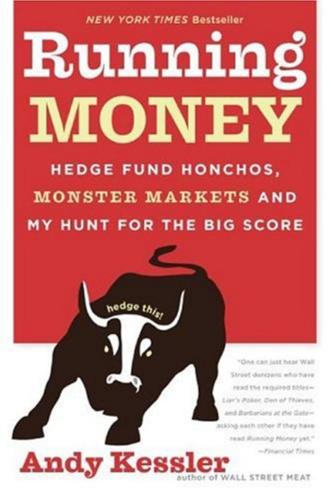
Running Money
by
Andy Kessler
Published 4 Jun 2007
Fortunately, we had been returning capital to investors every month, forcing us to sell, and we ended up down only 5% for the year. It’s not a great consolation prize. > > > Morgan Stanley Tech Conference 2001 SCOTTSDALE, ARIZONA—JANUARY 2001 “Did you listen to Shamazon? It looked like Bezos wanted to strangle Mary Meeker for showing up late.” “Nick, how come I knew I would run into you here?” I said. “I’m still waiting for an answer why they classify order fulfillment as a marketing expense.” “Because it would show they are shipping a $5 bill with every order they fill?” I asked. “That too. They’re hiding how bad their gross margins are.

Disrupted: My Misadventure in the Start-Up Bubble
by
Dan Lyons
Published 4 Apr 2016
A watershed moment occurred on August 9, 1995, when Netscape Communications, maker of the first web browser, pulled off a huge IPO and saw its shares nearly triple in their first day of trading. Until then, companies were typically expected to be profitable before they could sell shares to the public. Netscape was gushing red ink. Mary Meeker, an investment banker at Morgan Stanley, which underwrote the IPO, later recalled to Fortune: Was it early for the company to go public? Sure. There has been a rule of thumb that a company should have three quarters of obviously robust revenue growth. And you also traditionally wanted to see three quarters of profitability—improving profitability, for newer companies.

Life After Google: The Fall of Big Data and the Rise of the Blockchain Economy
by
George Gilder
Published 16 Jul 2018
In the history of the technology, Walmart may prove to be the crucial matrix of success. Lowe’s has followed with widespread adoption of virtual reality to train customers in techniques of home improvement. Entering the “happening” phase, virtual reality pervades the venerable Internet Trends Report by Mary Meeker of Kleiner, Perkins, Caufield & Byers. She reports that consumers are buying headsets at a slow but steady rate, while gaming companies pull in real money on VR titles. Entrepreneurs are often fans of gaming, Meeker notes, citing Elon Musk, Reid Hoffman, and Mark Zuckerberg. Global interactive gaming is becoming mainstream, with 2.6 billion gamers in 2017, up twenty-six-fold in little more than a decade.

Losing the Signal: The Spectacular Rise and Fall of BlackBerry
by
Jacquie McNish
and
Sean Silcoff
Published 6 Apr 2015
Spence and fellow evangelists were greeted like conquering heroes when they returned with weekly tales from the trenches. Colleagues who had worked long, frustrating hours to perfect the BlackBerry were astonished by its fame south of the border. “You knew and could feel you were part of something special,” he says. The dot-com bubble was the era of the rock-star tech analyst. With one call, Morgan Stanley’s Mary Meeker and Merrill’s Steve Milunovich could make or break a young high-tech firm’s prospects. Milunovich shared his views on RIM for the first time in May 18, 1999. His report raved about BlackBerry’s ease of use, durability, and market potential. Impressed, the analyst put a $13 price target on the stock, 20 percent higher than its last price.
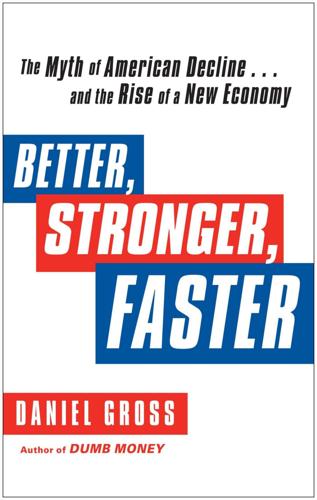
Better, Stronger, Faster: The Myth of American Decline . . . And the Rise of a New Economy
by
Daniel Gross
Published 7 May 2012
In 2011 Japan’s fertility rate was 1.21 per woman; in the United States it was 2.05.10 The bad news bears presume that America is incapable of rebuilding itself. But the rebuilding has already begun. In getting back on its feet, the country rediscovered the competitive advantages it has long had, advantages that lay dormant during the credit and housing boom. In February 2011 Mary Meeker, who gained fame as an Internet stock analyst at Morgan Stanley in the 1990s and has since evolved into a venture capitalist, issued what was meant to be a 466-page report evaluating the United States as if it were a stock. Meeker is remembered for having slapped buy recommendations on dot-com stocks and never changing her mind even as the market plummeted.

The New New Thing: A Silicon Valley Story
by
Michael Lewis
Published 29 Sep 1999
"The simpler the better," said the Morgan Stanley man. "Think AOL. One of the great things about AOL was that they hammered into the heads of investors the idea that all that mattered was the number of subscribers." Clark said, "That's exactly right." The Morgan Stanley man became more enthusiastic about the physician metric. He wanted to call Mary Meeker, the Morgan Stanley analyst who was fast making a name for herself as the leading authority on Internet businesses, and "bake" into her mind the idea that investors should focus only on the number of physicians hooked up to Healtheon's service. Long leaned over to Clark and said, "Hell, we could get 150,000 more physicians with just two deals."
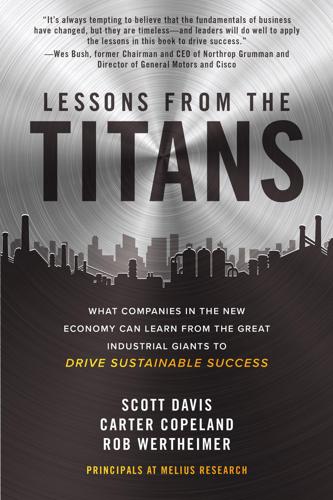
Lessons from the Titans: What Companies in the New Economy Can Learn from the Great Industrial Giants to Drive Sustainable Success
by
Scott Davis
,
Carter Copeland
and
Rob Wertheimer
Published 13 Jul 2020
Research departments on Wall Street are notoriously difficult to get into and even more difficult to advance in once there. It takes commitment and sponsorship to get very far. We were each amazingly lucky and grateful to be emerging analysts who were mentored by some of the most talented writers and thinkers in the business—people like Alice Schroeder, Steve Girsky, Mary Meeker, Chuck Phillips, Henry McVey, Byron Wien, Barton Biggs, Stephen Roach, and Jennifer Murphy. They were all top-ranked analysts in their field at a time when competition among analysts was amazingly high. And they each had impressive second careers once their analyst days were over. Management at senior levels was equally inspiring: Mayree Clark, Dennis Shea, and Andrew Jones from the Morgan Stanley research department; Stu Linde from the Lehman Brothers research department; Ruth Porat from investment banking; and Morgan Stanley CEO John Mack each stand out.
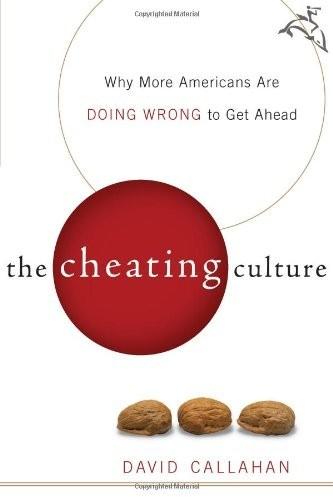
The Cheating Culture: Why More Americans Are Doing Wrong to Get Ahead
by
David Callahan
Published 1 Jan 2004
At the time Kanjilal sold, Merrill and Blodget were continuing to recommend InfoSpace to investors. Kanjilal's losses were part of an estimated $4 trillion that investors lost when NASDAQ crashed. Big-name analysts hyped many sinking tech stocks with the same enthusiasm they'd shown in pumping them up. For example, as of May 2001, Morgan Stanley's top Internet analyst, Mary Meeker, was still bestowing her once-coveted "outperform" rating on Priceline, then down from $162 to $4, and on Yahoo!, down from $237 to $19.50. Kanjilal's lawsuit against Merrill Lynch attracted the attention of Eliot Spitzer's office not long after it was filed. Initiating a criminal investigation, Spitzer uncovered a shocking pattern of public deceit and conflict of interest at Merrill Lynch.
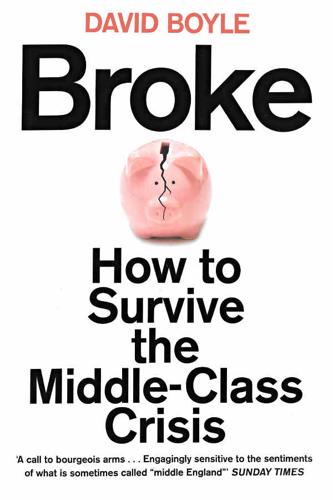
Broke: How to Survive the Middle Class Crisis
by
David Boyle
Published 15 Jan 2014
For a moment, they had many people believing that a website like @Home was suddenly worth the same as Lockheed Martin, or the Internet share-trader E*Trade was worth the same as the giant American Airlines. Tiny AOL even took over the giant media empire Time Warner — one of the most disastrous mergers of all time. ‘We have one general response to the word “valuation” these days: “Bull market”,’ said Morgan Stanley’s Mary Meeker, the so-called Queen of the Net. ‘We believe we have entered a new valuation zone.’ What were Woolley and his colleagues going to do in the face of this insanity? If they followed the momentum, they knew they would lose money when the spell broke. But in the meantime, unless they followed the rest, then their customers would demand to know why not.
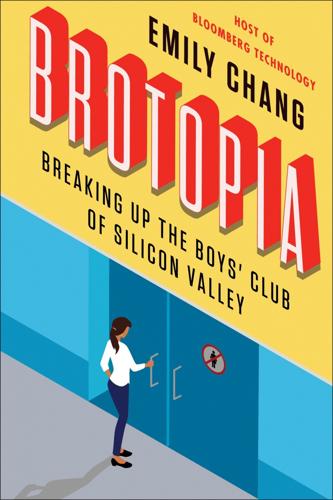
Brotopia: Breaking Up the Boys' Club of Silicon Valley
by
Emily Chang
Published 6 Feb 2018
Kleiner, on the other hand, changed its approach, scaling up in staff size and widening its investment focus to include new energy and clean tech—changes made largely at the behest of Doerr. Among the slew of new partners hired were big names such as former vice president Al Gore, the famed former Wall Street analyst Mary Meeker, and the esteemed doctor Beth Seidenberg; the new junior partners included a number of promising women. Doerr continued to push recruiters hard to find more women, even when other partners didn’t agree it should be a top priority. With these new hires, Kleiner became one of the most gender-diverse top-tier venture capital firms in Silicon Valley.

A Demon of Our Own Design: Markets, Hedge Funds, and the Perils of Financial Innovation
by
Richard Bookstaber
Published 5 Apr 2007
The Internet fervor was fed by a self-reinforcing and self-financing hype machine. Billions of dollars went from investors into the coffers of the Internet firms and then was spent on advertisements touting the firms, often in publications that breathlessly described their brilliance. And which experts did the publications quote? A set of Internet analysts, ranging from Mary Meeker at Morgan Stanley to Henry Blodget at Merrill Lynch, shills who pushed virtually every company they covered in hopes of snagging their investment banking business. During this period, buy recommendations among Wall Street analysts outnumbered sell recommendations by a ratio of nearly a hundred to one.
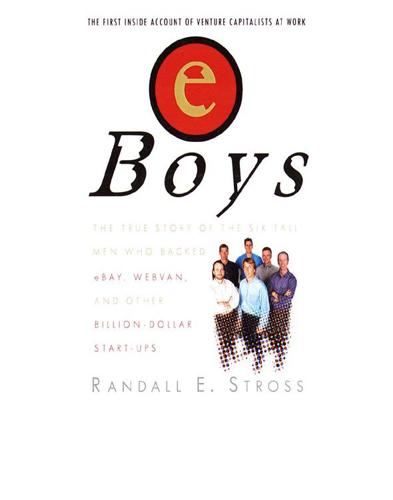
eBoys
by
Randall E. Stross
Published 30 Oct 2008
Skoll reiterated the point: Let’s be conservative about the price. Eighteen dollars was the agreed-upon price, what Fitt called “eighteen with a vengeance.” That night the institutional buyers took legal possession of the shares, and the IPO was complete. Then the investment world waited to see the first trade the next morning. Before trading commenced, Mary Meeker, Morgan Stanley’s head Internet analyst who had been beaten out in the bake-off with Goldman Sachs for the eBay IPO and who had every reason to withhold her approval, surprised Wall Street by issuing a report recommending eBay as an “outperform.” (Onsale’s Jerry Kaplan, when asked for his reaction to Meeker’s enthusiastic praise of eBay’s business model, predicted that eBay’s revenues would disappear altogether; person-to-person auctions would go the way of e-mail services and be available for free as a means to draw traffic to sites.)
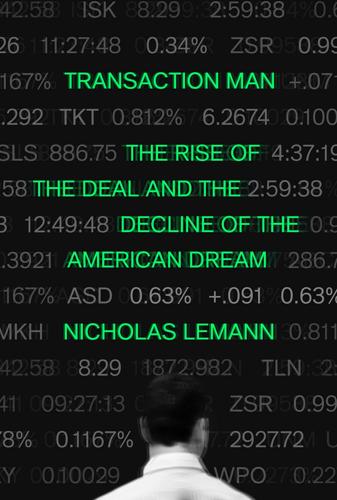
Transaction Man: The Rise of the Deal and the Decline of the American Dream
by
Nicholas Lemann
Published 9 Sep 2019
Dick Fisher, and John Mack after him, liked to say that three forces were driving the new financial world: deregulation, globalization, and technology. Morgan Stanley pursued enthusiastically anything that seemed attuned to those forces. The firm started a quantitative trading division run by a team of mathematicians. It invented new kinds of derivatives. It became a force in Silicon Valley, where its star analyst, Mary Meeker, wrote optimistic reports about the future of technology and also made Morgan Stanley the leading manager of the initial public offerings of companies like Netscape and Google. In 1993 Morgan Stanley’s investment bankers advised Dean Witter, a big retail stockbroker that was especially strong in the Midwest, when it spun itself off from Sears, the venerable chain of stores, and became a separate company.
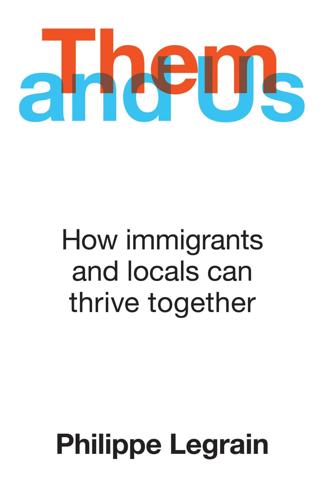
Them and Us: How Immigrants and Locals Can Thrive Together
by
Philippe Legrain
Published 14 Oct 2020
Stuart Anderson, ‘Immigrants and Billion Dollar Startups’, National Foundation for American Policy Brief, March 2016. http://nfap.com/wp-content/uploads/2016/03/Immigrants-and-Billion-Dollar-Startups.NFAP-Policy-Brief.March-2016.pdf 3 Dave Lee, ‘Tony Xu, the steady hand steering DoorDash’s delivery empire’, Financial Times, 28 February 2020. https://www.ft.com/content/53e32708-59ea-11ea-a528-dd0f971febbc 4 William Kerr, The Gift of Global Talent: How Migration Shapes Business, Economy & Society, Stanford, 2018, Figure 3.3. https://www.sup.org/books/title/?id=29770 5 Rani Molla, ‘More than half of the most valuable US tech companies were founded by first- or second-generation immigrants’, Vox, 30 May 2018. https://www.vox.com/2018/5/30/17385226/kleiner-perkins-mary-meeker-immigration-tech-founders-jobs-slides-code-conference 6 ‘New American Fortune 500 in 2019: Top American Companies and Their Immigrant Roots’, New American Economy, 22 July 2019. https://data.newamericaneconomy.org/en/fortune500-2019/ 7 The rate of new entrepreneurs was 0.53 percent for immigrants in 2018, which means they are twice as likely to start businesses as the US-born (0.27 percent).

The New Digital Age: Transforming Nations, Businesses, and Our Lives
by
Eric Schmidt
and
Jared Cohen
Published 22 Apr 2013
Canadian journalist Amanda Lindhout was kidnapped: “Canadian Amanda Lindhout Freed in Somalia,” CBC (Ottawa), last updated November 25, 2009, http://www.cbc.ca/news/world/story/2009/11/25/amanda-lindhout-free.html. her former captors: Author conversation with Amanda Lindhout, July 2012. It is estimated that more than 90 percent of people worldwide: Technology / Internet Trends October 18, 2007, Morgan Stanley (China Mobile 50K Survey), 7. Posted on Scribd, http://www.scribd.com/doc/404905/Mary-Meeker-Explains-The-Internet. Osama bin Laden’s compound contained a large stash of pornographic videos: Scott Shane, “Pornography Is Found in bin Laden Compound Files, U.S. Officials Say,” New York Times, May 13, 2011, http://www.nytimes.com/2011/05/14/world/asia/14binladen.html. Secretariat of Public Security compound in Mexico City: Venu Sarakki et al., “Mexico’s National Command and Control Center Challenges and Successes,” 16th International Command and Control Research and Technology Symposium in Quebec, Canada, June 21–23, 2011, http://www.dtic.mil/dtic/tr/fulltext/u2/a547202.pdf.

Hedgehogging
by
Barton Biggs
Published 3 Jan 2005
There also were a fair number of technology investment bankers present, and a famous professor from M.I.T. who had just written a best-selling book about the innovator’s dilemma. That summer, tech stocks were on a rocket trip to the moon, and the technology entrepreneurs at the conference were real dudes. Frank Quattrone and Mary Meeker were their heroes. Mary actually cautioned the crowd that things were getting crazy, but the herd thought she was kidding. As executives and entrepreneurs, they oozed optimism and confidence. Their chatter was all about sustaining and disruptive technologies, growth trajectories, Gulfstreams (it’s an airplane), and units.
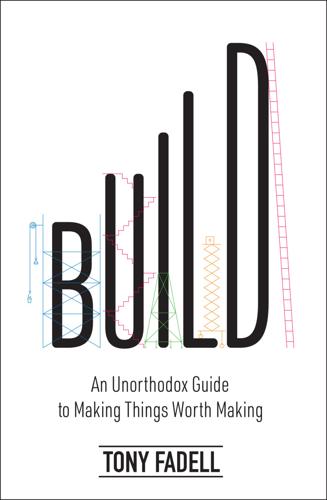
Build: An Unorthodox Guide to Making Things Worth Making
by
Tony Fadell
Published 2 May 2022
All the encouragement, support, and great ideas from friends and readers—Cameron Adams, David Adjay, Cristiano Amon, Frederic Arnault, Hugo Barra, Juliet de Baubigny, Yves Behar, Scott Belsky, Tracy Beiers, Kate Brinks, Willson Cuaca, Marcelo Claure, Ben Clymer, Tony Conrad, Scott Cook, Daniel Ek, Jack Forester, Case Fadell, Pascal Gauthier, Malcolm Gladwell, Adam Grant, Hermann Hauser, Thomas Heatherwick, Joanna Hoffman, Ben Horowitz, Phil Hutcheon, Walter Isaacson, Andre Kabel, Susan Kare (designer of the famous walking lemon, among a million other things), Scott Keogh, Randy Komisar, Swamy Kotagiri, Toby Kraus, Hanneke Krekels, Jean de La Rochebrochard, Jim Lanzone, Sophie Le Guen, Jenny Lee, John Levy, Noam Lovinsky, Chip Lutton, Micky Malka, John Markoff, Alexandre Mars, Mary Meeker, Xavier Niel, Ben Parker, Carl Pei, Ian Rogers, Ivy Ross, Steve Sarracino, Naren Shaam, Kunal Shah, Vineet Shahani, Simon Sinek, David and Alaina Sloo, Whitney Steele, Lisette Swart, Anthony Tan, Min-Liang Tan, Sebastian Thrun, Mariel van Tatenhove, Steve Vassallo, Maxime Veron, Gabe Whaley, Niklas Zennström, Andrew Zuckerman—your frank comments and advice helped so much to shape this book and give us the confidence to continue through the tough weeks.
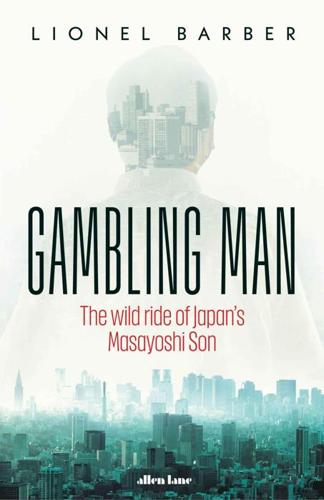
Gambling Man
by
Lionel Barber
Published 3 Oct 2024
In 1998, he initiated coverage of loss-making Amazon with a strong buy and a price target of $400. When the stock jumped immediately from $289 to $480, Blodget became head of dot-com research at Merrill Lynch, the Wall Street powerhouse. From that day on, the word was with Henry Blodget.1 Another influencer was Mary Meeker, the Morgan Stanley analyst dubbed the Queen of the Internet. She declared it was time to be ‘recklessly rational’, whatever that meant. Morgan Stanley was courting investment banking business so aggressively that few could recall a Meeker ‘sell’ recommendation; but she still had a point. What counted was not so much direction but timing: when to buy and when to sell – a big test for a techno-optimist like Masa.
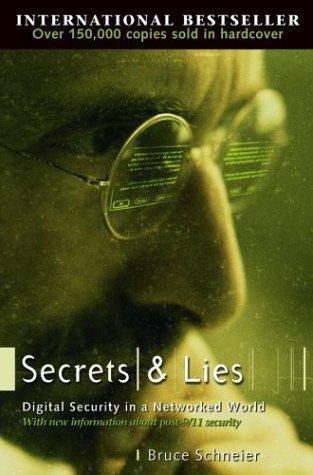
Secrets and Lies: Digital Security in a Networked World
by
Bruce Schneier
Published 1 Jan 2000
Praise for Secrets and Lies “Successful companies embrace risk, and Schneier shows how to bring that thinking to the Internet.” –Mary Meeker, Managing Director and Internet Analyst, Morgan Stanley, Dean Witter “Bruce shows that concern for security should not rest in the IT department alone, but also in the business office . . . Secrets and Lies is the breakthrough text we’ve been waiting for to tell both sides of the story.” –Steve Hunt, Vice President of Research, Giga Information Group “Good security is good business. And security is not (just) a technical issue; it’s a people issue!
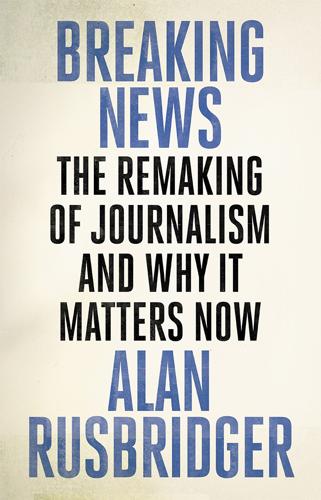
Breaking News: The Remaking of Journalism and Why It Matters Now
by
Alan Rusbridger
Published 14 Oct 2018
It was still difficult to see how you could build a big enough online audience while simultaneously asking them to pay for the privilege. Quite a bit of print would follow that logic – with a mushrooming of give-away titles. For the moment, for general news, the online future looked as though it was bound to be free. So many consultants, so much to keep abreast of. The social web was the focus of the 2006 report by Mary Meeker, a Morgan Stanley venture capitalist whose annual pronouncements on digital media were treated as close to holy writ. Murdoch’s MySpace was singled out as a company of extraordinary growth. Mobile was a glimmer in the eye (8 per cent of global phone subscribers were on 3G). The fastest growing companies were the Web 2.0 websites.
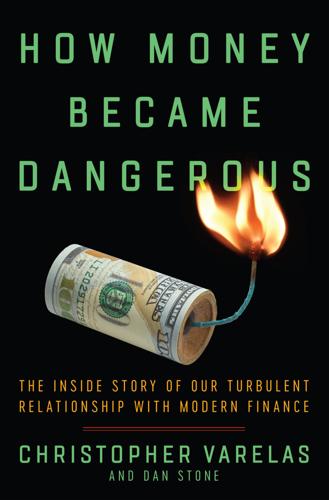
How Money Became Dangerous
by
Christopher Varelas
Published 15 Oct 2019
He launched straight into a second story, telling us about another phone call he’d had that weekend with Citi’s Jack Grubman, who was by far the most respected telecom analyst in the world—as well as the highest paid, at more than $20 million per year—and he was one of the three most respected equity analysts period, along with Mary Meeker at Morgan Stanley and Henry Blodget at Merrill Lynch. Grubman had built his fame on trashing AT&T, at which, early in his career, he had worked for eight years as a quantitative researcher. During that time, the federal government forced AT&T to split into eight regional phone companies. A 2003 New Yorker piece noted: “He made his reputation by arguing that deregulation would allow smaller, nimbler companies to usurp the position of his former employer—an analysis that proved correct.
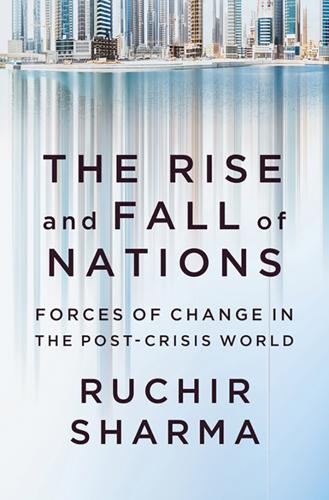
The Rise and Fall of Nations: Forces of Change in the Post-Crisis World
by
Ruchir Sharma
Published 5 Jun 2016
The number of student visas rose to nearly half a million over that period, but the number of employment or H1B visas held steady at around 150,000. The United States was sending 350,000 graduates home each year, mostly to India and China, and competitors were circling California, picking off fresh talent. In 2013 the tech analyst Mary Meeker circulated photos of a billboard that the Canadian government placed on Highway 101, the main artery through Silicon Valley, taking a cheeky jab at President Barack Obama’s promise of a foreign policy “Pivot to Asia.” The billboard read, “H1B problems? Pivot to Canada.” Before a visit to the Bay Area in the summer of 2013, Canada’s minister of citizenship, immigration, and multiculturalism, Jason Kenney, said he was going to spread the word that Canada is “open for newcomers” and was “not going to apologize” for poaching talent.

The Founders: The Story of Paypal and the Entrepreneurs Who Shaped Silicon Valley
by
Jimmy Soni
Published 22 Feb 2022
Its bankers would verify listing requirements, share its story with investors, suss out demand for the stock, and price and time the IPO for maximum effect. The team notched an early win when Morgan Stanley agreed to serve as its lead underwriter. The Morgan Stanley team, headlined by its star analyst Mary Meeker, had a strong reputation for tech IPOs, including the legendary 1995 Netscape IPO, seen as the starting gun for the dot-com boom. That same year, Meeker published the inaugural issue of “Internet Trends”—her “state of the union” for the digital world. In-mid August 2001, PayPal began the IPO process by preparing its S-1, a multi-hundred-page document submitted to the SEC detailing a company’s financials, operations, history, and legal issues.

More Money Than God: Hedge Funds and the Making of a New Elite
by
Sebastian Mallaby
Published 9 Jun 2010
If the company spent $1 million on attracting new subscribers, it did not recognize that cost immediately; it treated its advertising as an investment, to be counted against revenues bit by bit, like the cost of buying plant and machinery. The short sellers were correct that this was a low trick, and eventually America Online abandoned it.24 But the company’s share price refused to break its upward stride: The short sellers won the accounting argument, but they still lost their shirts in the investment. Mary Meeker, the Morgan Stanley analyst who had been dubbed the “Queen of the Net” by Barron’s, conceded that old-school value investors, brought up on the classic teachings of Ben Graham and David Dodd, might have trouble seeing the value in a company that would report losses if it respected the accounting rules.25 But that was the old timers’ problem.
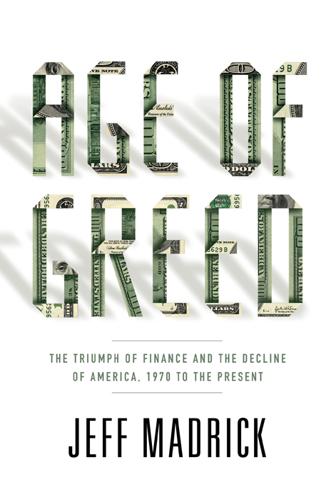
Age of Greed: The Triumph of Finance and the Decline of America, 1970 to the Present
by
Jeff Madrick
Published 11 Jun 2012
.: Princeton University Press, 2005), p. 2. 8 “I HAVE TWELVE OR FOURTEEN”: Author interview with Albert Vilar, May 2000. 9 AMERINDO FOLDED AND VILAR, CONVICTED: http://topics.nytimes.com/topics/reference/ timestopics/people/v/alberto_w_vilar/index.html. 10 IN 1990, THE TEN LARGEST COMPANIES: Frank Partnoy, Infectious Greed: How Deceit and Risk Corrupted the Financial Markets (New York: Henry Holt, 2003), p. 2. 11 “STOCKS FOR A NEW INDUSTRY”: Mary Meeker, U.S. News & World Report, April 3, 2000. 12 “A NEW ERA ECONOMY”: Partnoy, Infectious Greed, p. 107. 13 YET THERE WERE MANY HISTORICAL ANALOGIES: See, for example, Murray N. Rothbard, The Panic of 1819 (New York: AMS, 1962). 14 THE ECONOMIST WROTE IN 1999: The Economist, September 29, 1991, quoted by Jeff Madrick, The Business Media and the New Economy, Joan Shorenstein Center, Harvard University, December 2001, p. 13. 15 AS LATE AS 2000: Peter Schwartz and Peter Leyden, “The Long Boom: A History of the Future, 1980–2020,” Wired, July 1997. 16 THERE WAS BROAD SUPPORT: “Question: Is There a New Economy?
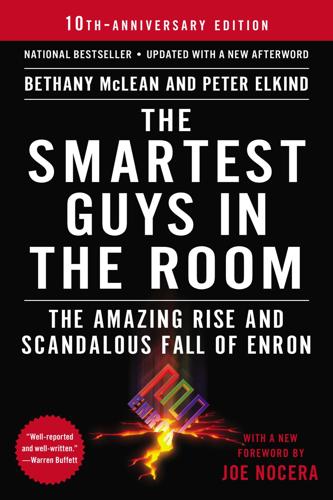
The Smartest Guys in the Room
by
Bethany McLean
Published 25 Nov 2013
Some of the most prominent analysts, such as Henry Blodget, who covered Internet stocks for Merrill Lynch, and Jack Grubman, Salomon Smith Barney’s telecom analyst, became even better known to the public than the CEOs whose companies they covered. But analysts got to be rich and famous only if they were bullish. That’s what got them appearances on CNBC, not to mention loving profiles in The New Yorker, an honor accorded Morgan Stanley’s famed Internet analyst Mary Meeker. As the market rocketed upward, bearish analysts who dared to buck the crowd were putting their jobs in jeopardy. Many were replaced by more bullish souls. In Internet chat rooms, individual investors flamed analysts who downgraded their favorite stocks. Even sophisticated institutional investors—the analysts’ primary clients—often became angry at research analysts who turned bearish on stocks they held.